inbox and environment news: Issue 535
April 24 - 30, 2022: Issue 535
Green Grants To Expand Urban Forest Allocates 50k To Council
- Northern Beaches Urban Tree Plan
- The Tiny Forest Project
- to improve our tree canopy and wildlife habitats;
- to create healthy and diverse landscaping in our streets and parks; and
- to contribute to the health and wellbeing of all that enjoy our area.
Barrenjoey Headland Amenities Concept Plan
- the building will be set into the landscape, concealed by the landform and native heath
- screened walls to the front of the building will allow for natural light and ventilation
- timber screens will be left to grey with alternating painted battens to reference the colours of the surrounding natural landscape and heritage buildings
- unisex cubicles will be provided, including baby change facilities and a water refill station
- water supply and sewer infrastructure to service these amenities are already in place.

The Story Of Narrabeen Lagoon: Part 1 (2011)
Ban The Release Of Balloons In NSW Petition
Ella: Green Turtle Rescued From Manly
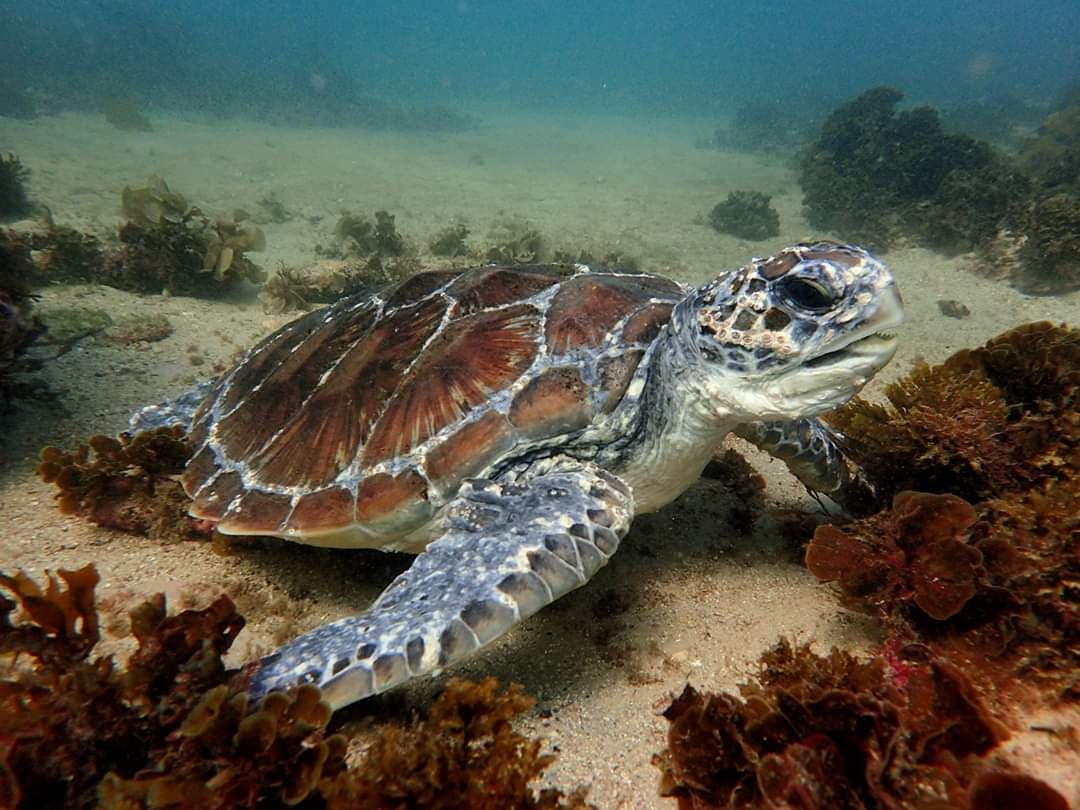
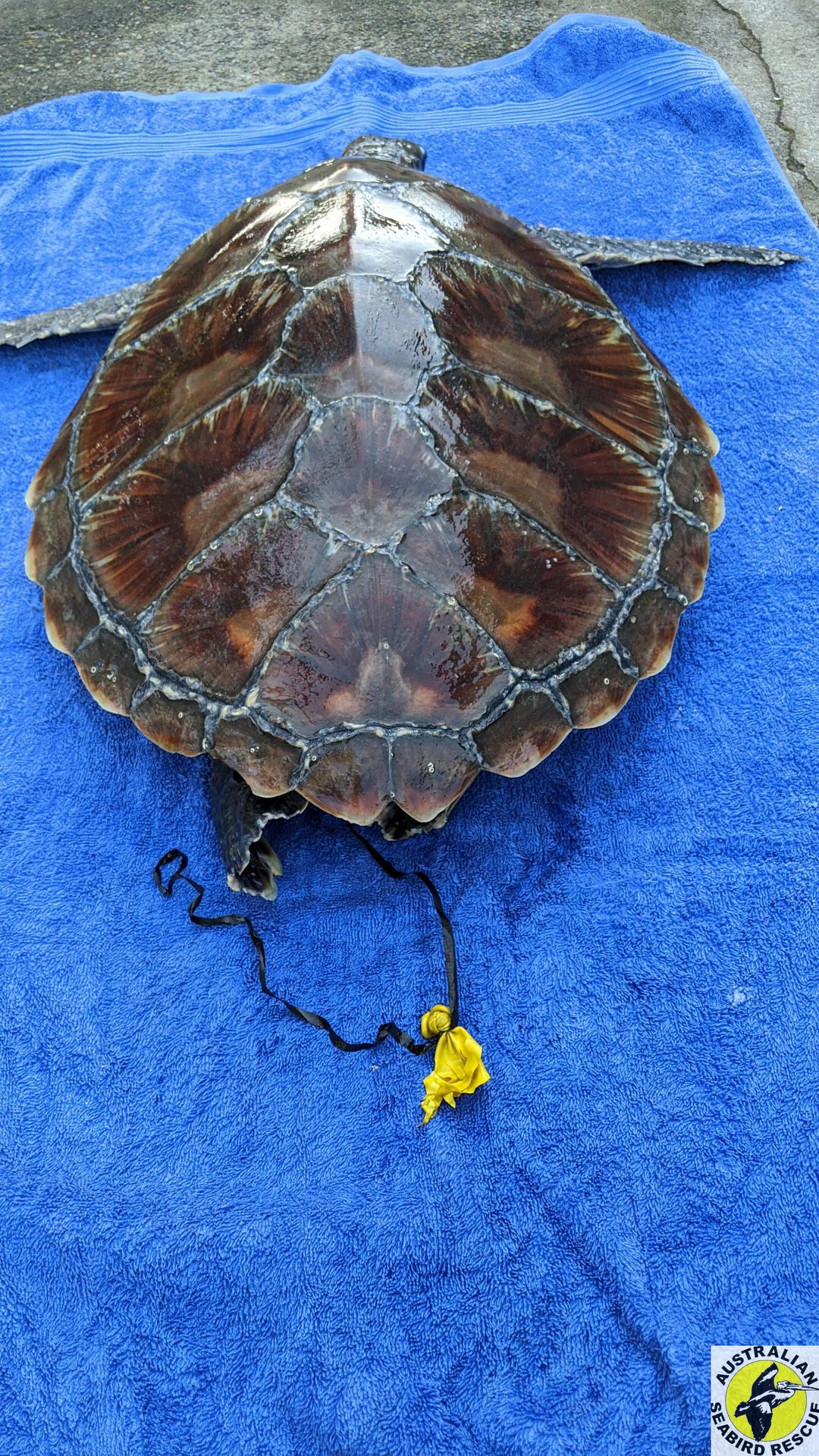
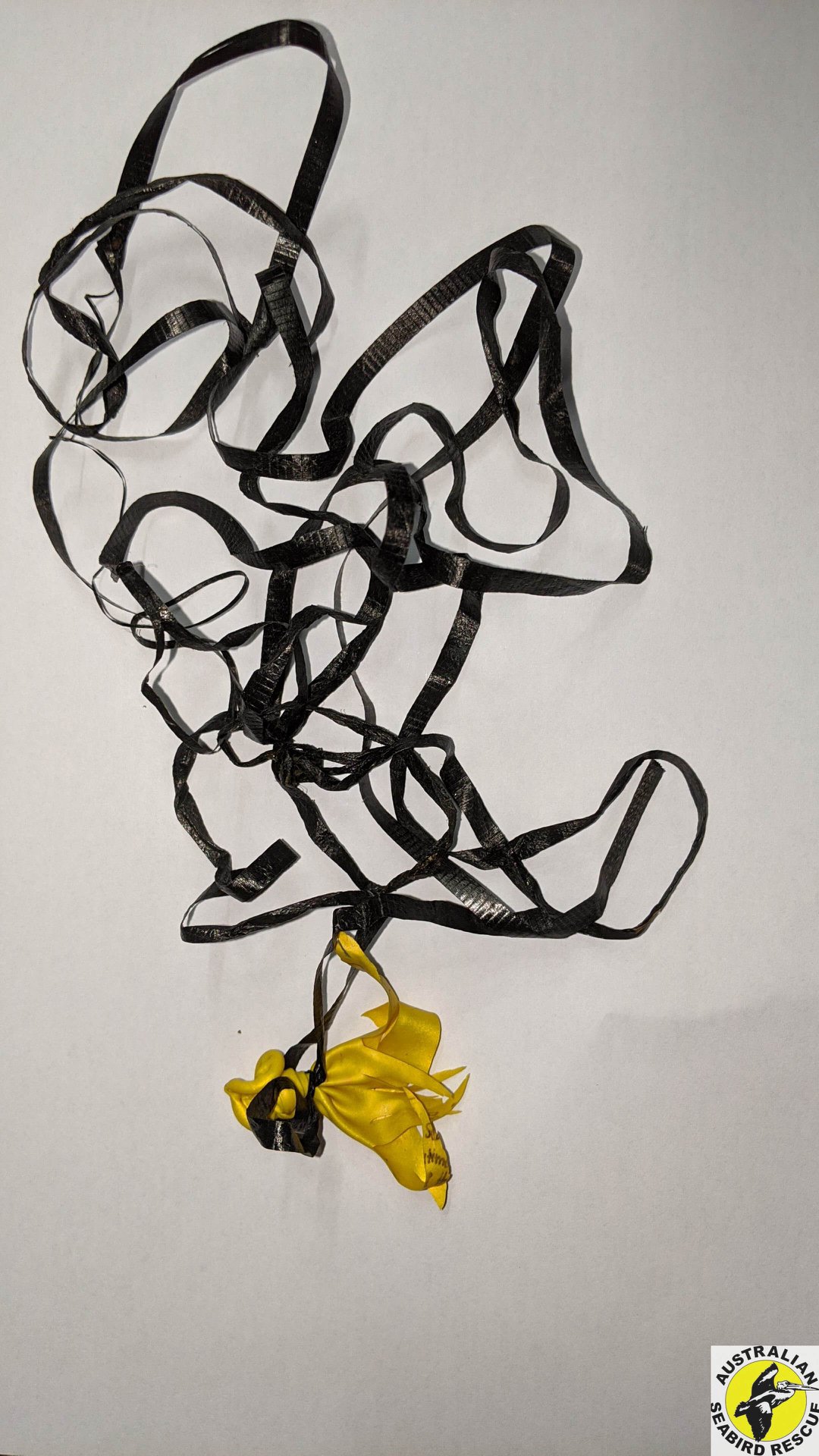
Local Wildlife Rescuers And Carers State That Ongoing Heavy Rains Are Tough For Us But Can Be Tougher For Our Wildlife:
- Birds and possums can be washed out of trees, or the tree comes down, nests can disintegrate or hollows fill with water
- Ground dwelling animals can be flooded out of their burrows or hiding places and they need to seek higher ground
- They are at risk crossing roads as people can't see them and sudden braking causes accidents
- The food may disappear - insects, seeds and pollens are washed away, nectar is diluted and animals can be starving
- They are vulnerable in open areas to predators, including our pets
- They can't dry out and may get hypothermia or pneumonia
- Animals may seek shelter in your home or garage.
You can help by:
- Keeping your pets indoors
- Assessing for wounds or parasites
- Putting out towels or shelters like boxes to provide a place to hide
- Drive to conditions and call a rescue group if you see an animal hit (or do a pouch check or get to a vet if you can stop)
- If you are concerned take a photo and talk to a rescue group or wildlife carer
There are 2 rescue groups in the Northern Beaches:
Sydney Wildlife: 9413 4300
WIRES: 1300 094 737
Please be patient as there could be a few enquiries regarding the wildlife.
Generally Sydney Wildlife do not recommend offering food but it may help in some cases. Please ensure you know what they generally eat and any offerings will not make them sick. You can read more on feeding wildlife here
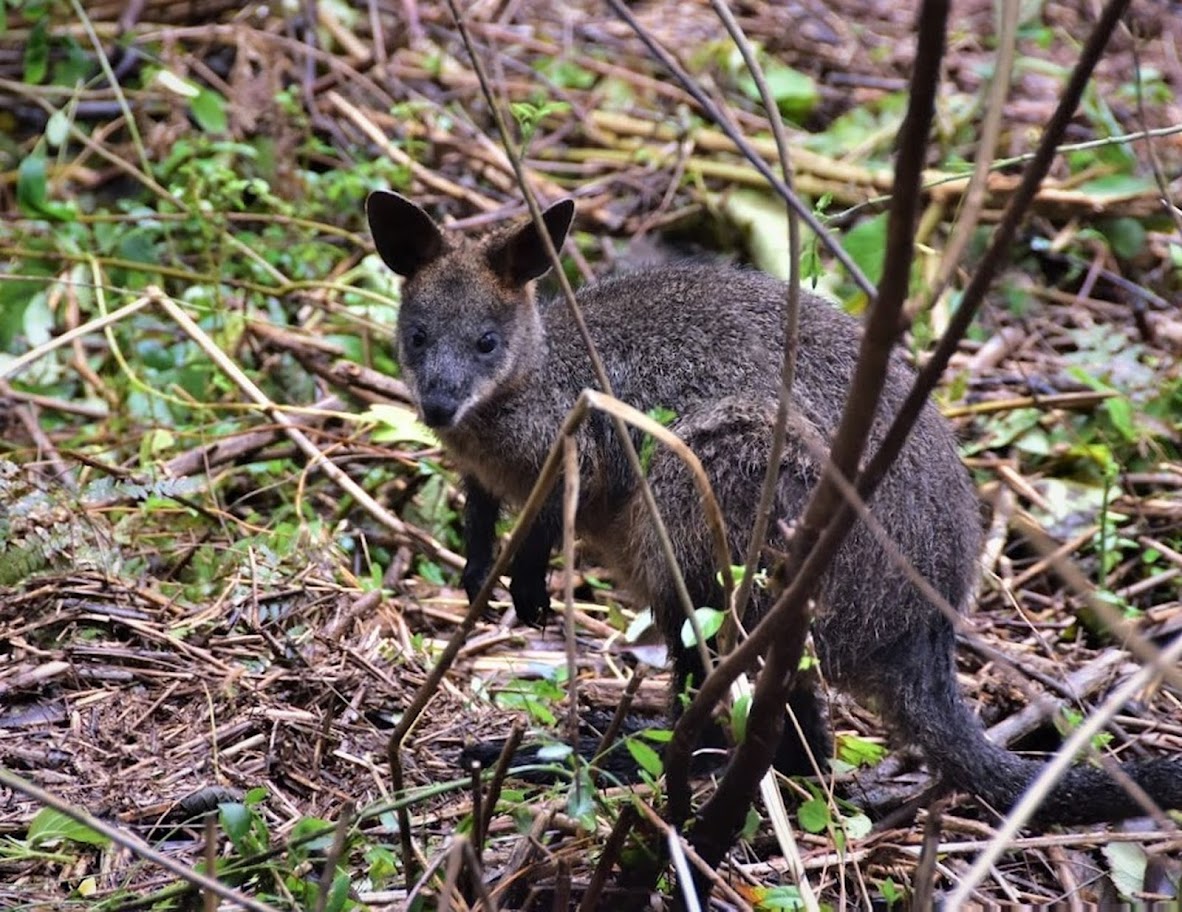
Information courtesy Ed Laginestra, Sydney Wildlife volunteer. Photo: Warriewood Wetlands Wallaby by Kevin Murray, March 2022.
Mackellar Candidate Forum 2022: Managing The Big Issues Facing Our Community
- Christopher BALL - United Australia Party
- Paula GOODMAN - Australian Labor Party
- Ethan HRNJAK - The Greens
- Dr. Sophie SCAMPS - Independent
- Barry STEELE - TNL (formerly The New Liberals)
.jpg?timestamp=1650677177096)
Friends Of Narrabeen Lagoon Catchment Forum: May 2022 - Speaker - Prof. Dennis Foley On The Aboriginal Heritage Of The Narrabeen Lagoon Catchment
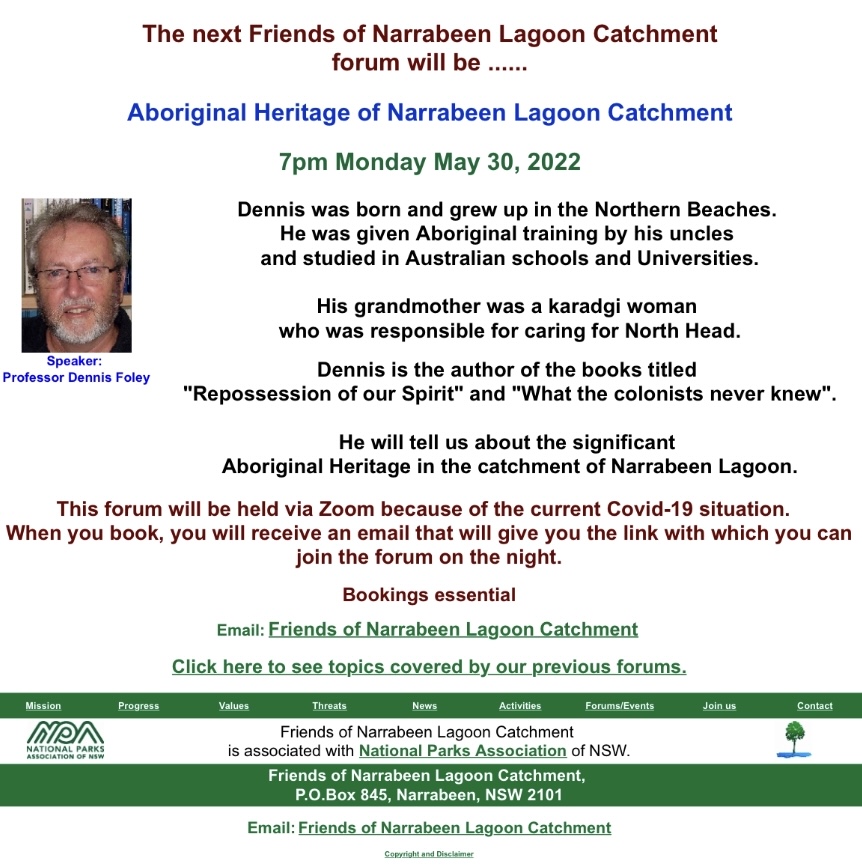
Pittwater Natural Heritage Association (PNHA) Autumn 2022 Newsletter
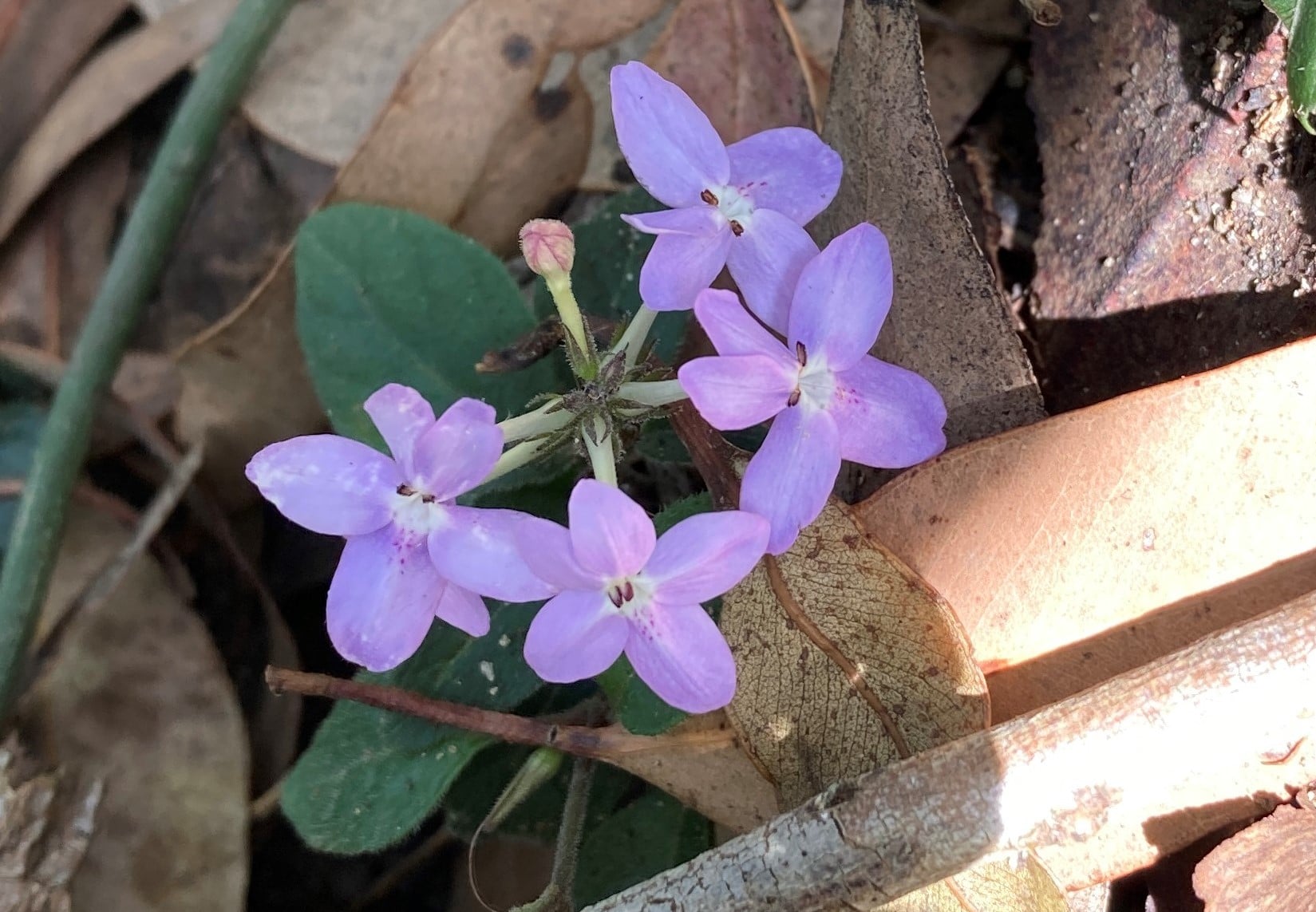
Cassia Flowering Now: Dispose Of This Weed To Stop The Spread
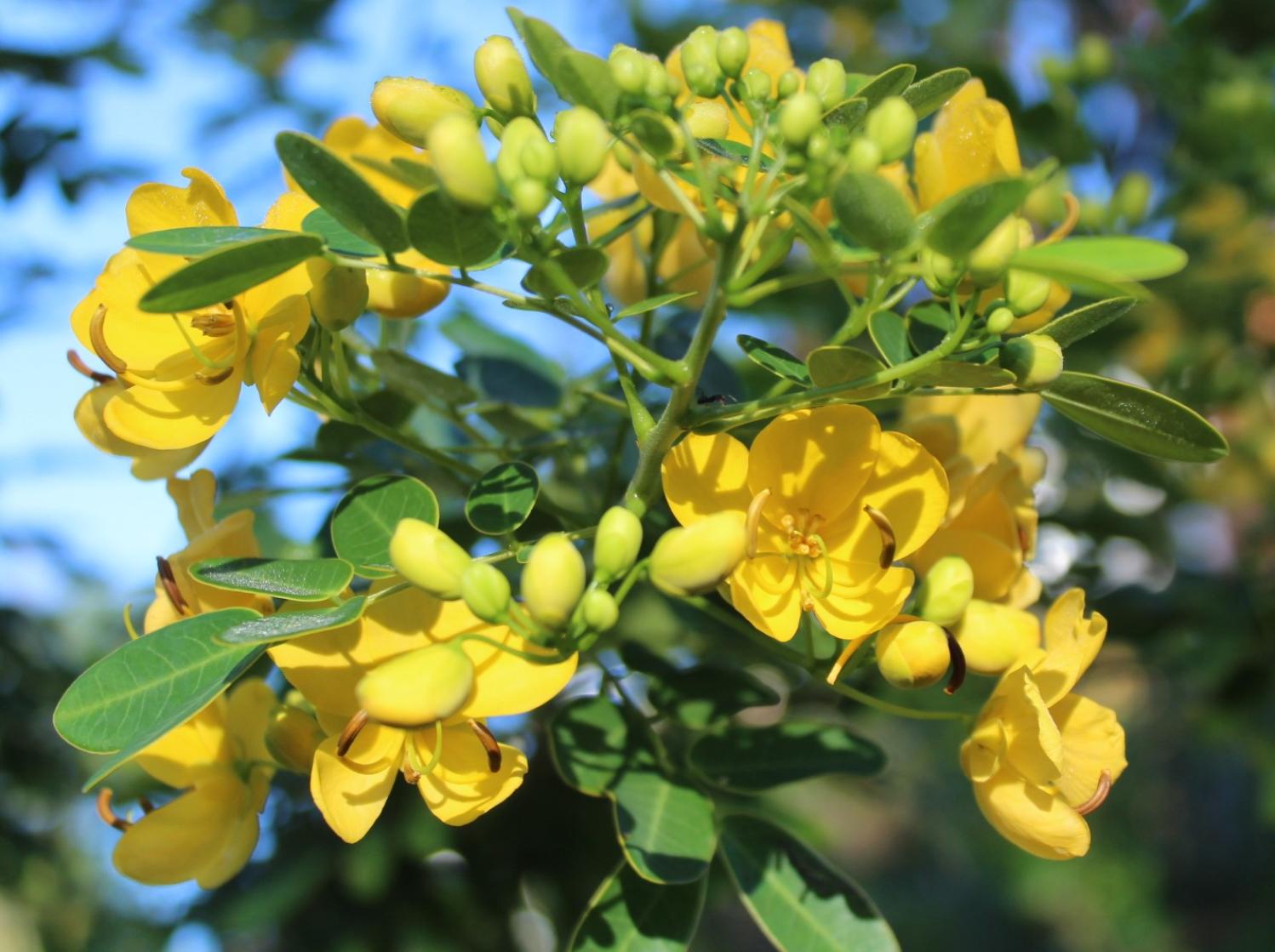
Aviaries + Possum Release Sites Needed

Sydney Wildlife Rescue: Helpers Needed
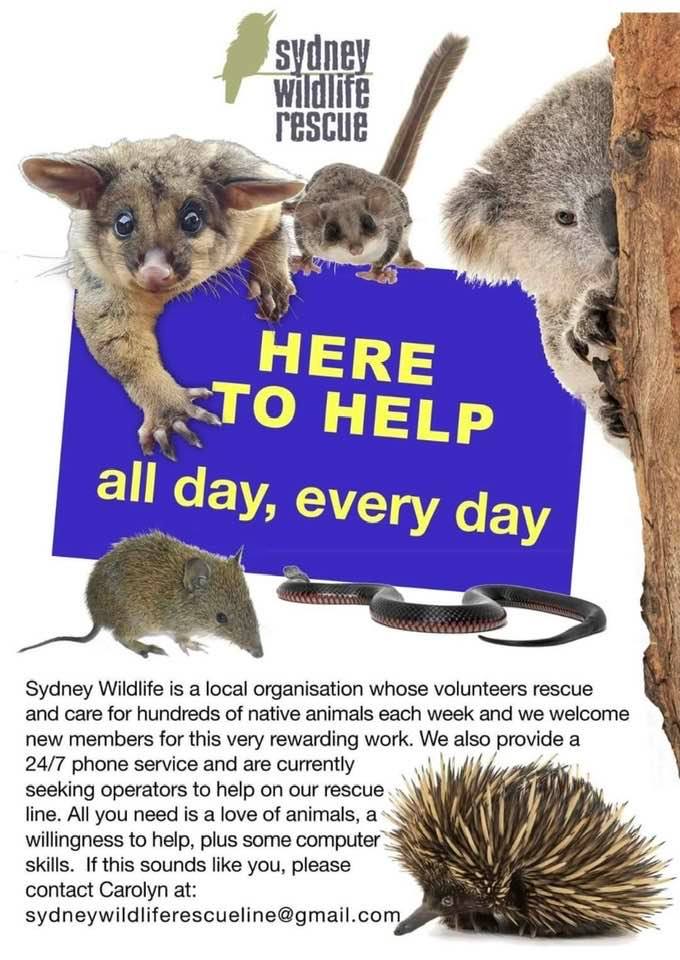
Bushcare In Pittwater
Where we work Which day What time
Avalon
Angophora Reserve 3rd Sunday 8:30 - 11:30am
Avalon Dunes 1st Sunday 8:30 - 11:30am
Avalon Golf Course 2nd Wednesday 3 - 5:30pm
Careel Creek 4th Saturday 8:30 - 11:30am
Toongari Reserve 3rd Saturday 9 - 12noon (8 - 11am in summer)
Bangalley Headland 2nd Sunday 9 to 12noon
Bayview
Winnererremy Bay 4th Sunday 9 to 12noon
Bilgola
North Bilgola Beach 3rd Monday 9 - 12noon
Algona Reserve 1st Saturday 9 - 12noon
Plateau Park 1st Friday 8:30 - 11:30am
Church Point
Browns Bay Reserve 1st Tuesday 9 - 12noon
McCarrs Creek Reserve Contact Bushcare Officer To be confirmed
Clareville
Old Wharf Reserve 3rd Saturday 8 - 11am
Elanora
Kundibah Reserve 4th Sunday 8:30 - 11:30am
 Mona Vale
Mona Vale Mona Vale Beach Basin 1st Saturday 8 - 11am
Mona Vale Dunes 2nd Saturday +3rd Thursday 8:30 - 11:30am
Newport
Bungan Beach 4th Sunday 9 - 12noon
Crescent Reserve 3rd Sunday 9 - 12noon
North Newport Beach 4th Saturday 8:30 - 11:30am
Porter Reserve 2nd Saturday 8 - 11am
North Narrabeen
Irrawong Reserve 2nd Saturday 2 - 5pm
Palm Beach
North Palm Beach Dunes 3rd Saturday 9 - 12noon
Scotland Island
Catherine Park 2nd Sunday 10 - 12:30pm
Elizabeth Park 1st Saturday 9 - 12noon
Pathilda Reserve 3rd Saturday 9 - 12noon
Warriewood
Warriewood Wetlands 1st Sunday 8:30 - 11:30am
Whale Beach
Norma Park 1st Friday 9 - 12noon
Western Foreshores
Coopers Point, Elvina Bay 2nd Sunday 10 - 1pm
Rocky Point, Elvina Bay 1st Monday 9 - 12noon
Gardens And Environment Groups And Organisations In Pittwater
Darkinjung Plans For 600 Homes On Central Coast's Lake Munmorah Now On Exhibition: Closes May 24
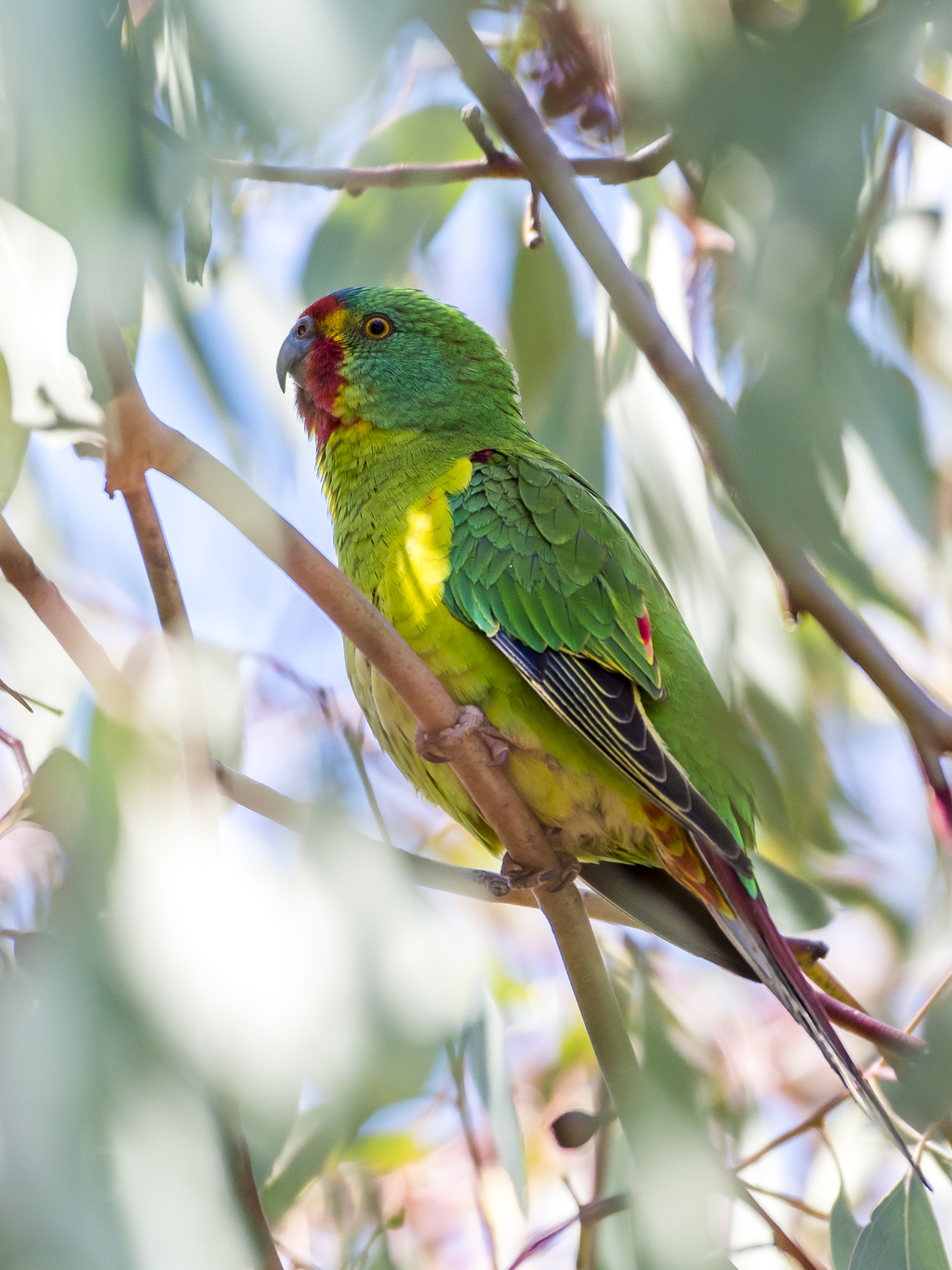
Perrottet Government Quietly Renews Massive Santos Gas Licences On Liverpool Plains Farmlands-Extends Piliga Range While Most Of The State On Holidays
- Is taking about 54 billion litres of water each year.
- Is expected to drain more than 700 water bores relied on for farming. Two hundred and thirty-three bores have already been impacted.
- Is causing groundwater levels to drop by more than 400 metres in some areas.
- Is expected to expand from 8,600 gas wells currently operating to about 22,000.
- Is causing farmland to sink due to depressurisation of coal seams beneath the surface.
Have Your Say On Key Environmental Legislation Reviews
EPA Statement On Recovered Soil Fines
- The need for record keeping, notification, quality control and quality assurance requirements.
- Setting out requirements for sampling and testing for a range of chemicals, including asbestos before they are approved for public use, which increases community safety.
Upper Hunter Community Wins 22 Year Battle Against Yancoal Mine Expansion
International Environmental Award For Hunter Valley Farmer Wendy Bowman Spotlights Coal Mining Damage
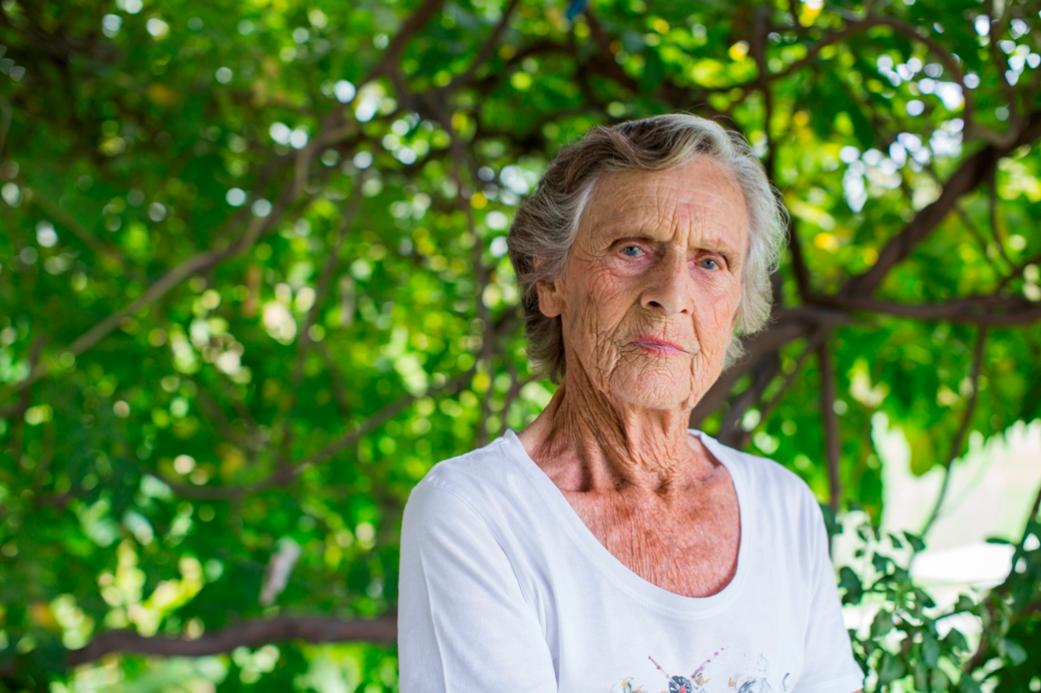
Wendy Bowman
2017 Goldman Prize Recipient
Islands And Island Nations
In the midst of an onslaught of coal development in Australia, octogenarian Wendy Bowman stopped a powerful multinational mining company from taking her family farm and protected her community in Hunter Valley from further pollution and environmental destruction.Islands of farms surrounded by coal mines
New South Wales (NSW), on Australia’s eastern coast, is a region with a rich agricultural history. Dairy farms, ranches, race horse farms, and vineyards dot the rural landscape in Hunter Valley, where descendants of some of the island’s earliest settlers have been working the land for generations. However, in recent years, the region’s farms have become islands surrounded by oceans of open-pit coal mines.
Under directives to prioritize economic growth above all else, government is issuing coal licenses with little regard to mining’s impact on local residents’ lives. Almost two-thirds of the Hunter Valley floor has been given away in coal concessions, producing 145 million tons of coal every year. Some of it is burned at nearby coal powered plants but the majority is shipped off to foreign markets, cementing Australia’s place as the world’s largest coal exporting country.
Coal mining has displaced many landowners in the valley. Those who remain live surrounded by around-the-clock blasting and heavy equipment operation. Coal dust settles onto houses, farmland, and water sources. When the wind blows, residents shut all doors and windows and stay inside. A survey by a local physician found that one in five children in the valley have lost some 20 percent of their lung capacity; asthma, heart disease, cancer, and mental health problems are on the rise.
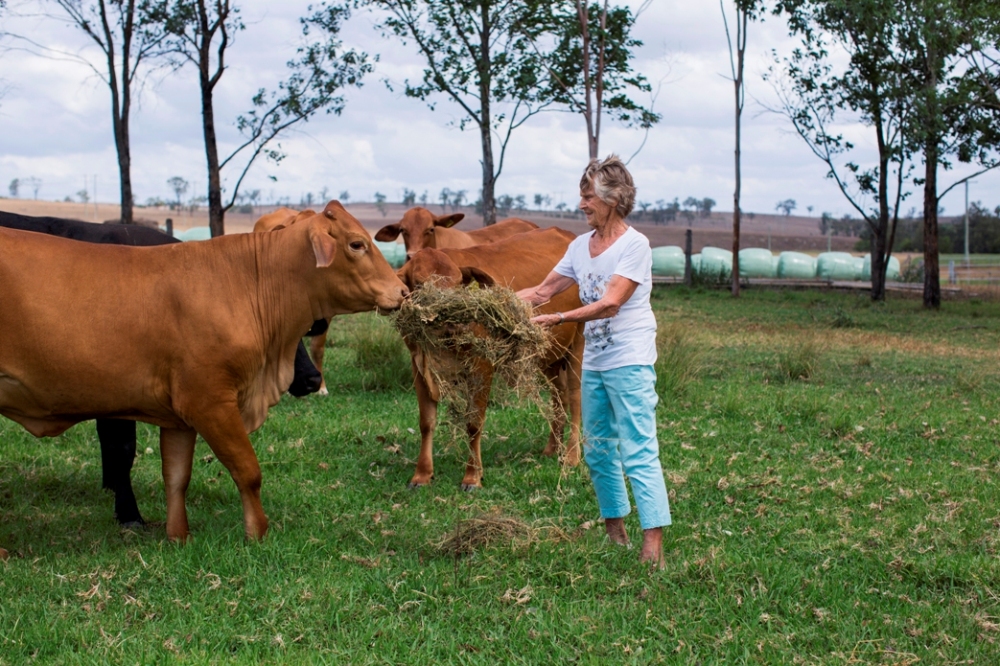
Uprooted twice, now determined to stayWendy Bowman, 83, is one of the last residents left in Camberwell, a small village in Hunter Valley surrounded on three sides by coal mining. She married a farmer and took over the family business after her husband’s untimely death in 1984. She had to quickly learn how to manage a farm, and abruptly encountered the harsh reality of what coal development was doing to the local community.
Landowners were being forced to move off their property with little say or explanation of their rights. In fact, they often found out their land had been leased to mining companies by reading about it in the local newspaper, where the government posted notices. Coal companies created divisions within the community by offering huge sums of money to select landowners and imposing a gag order on the terms of the deal.
In 1988, just four years after losing her husband, Bowman’s crops suffered a devastating failure. A coal mine had tunneled under a creek that irrigated her farm, and the heavy metals in the water caused the crops to die. Around the same time, another mine broke ground on nearby land, causing constant noise and light pollution. Coal dust from the mine covered her fields, and the cows refused to eat. After a contentious four-year battle, Bowman convinced the mine to buy out her farm that had been destroyed by mining. In 2005, she was forced to relocate again when she was served an eviction notice—and given six weeks to move to make room for a coal mine. She eventually settled down in Rosedale, a small cattle farm in Camberwell. But her battle against coal was far from over.
In 2010, Chinese-owned Yancoal proposed to extend the Ashton South East Open Cut mine, which would bring mining operations onto Bowman’s grazing lands and the banks of one of Hunter River’s most important water tributaries. Bowman was determined to stay and protect the community’s health, land, and water from further destruction.

Protecting Rosedale and Hunter Valley’s healthThe Ashton mine expansion was initially opposed by the regional government agencies because of concerns about the mine’s air and water pollution. Yancoal appealed in 2012, and the planning committee approved the project. By early 2015, more than 87 percent of homeowners in the proposed mining area had sold their property.
As one of the few landowners left in the area, Bowman became a key plaintiff in a public interest lawsuit to fight back the mine expansion. Given that more than half of the coal for the proposed mine is under Bowman’s property, her refusal to sell was a significant factor in the case.
The Land and Environment Court issued its ruling in December 2014: The Ashton expansion could proceed, but only if Yancoal could get Bowman to sell them her land. It was the first time an Australian court placed this kind of restriction on a mining company. The New South Wales Court of Appeals affirmed the lower court’s decision, effectively stopping the mine expansion in its tracks.
Bowman has refused offers of millions from Yancoal, and is now working on a plan to have Rosedale protected in perpetuity. She continues to be an advocate for the community’s health and environment, and has worked with the local health department to place air monitors near coal mines. She has also recently installed solar panels on her property, and envisions an energy future where Hunter Valley is powered by its abundant sun and wind.
Join Wendy demand that Australian politicians stop mining companies from destroying rural Australian communities.
The Goldman Environmental Prize is the world's largest award honoring grassroots environmental activistsAbout the PrizeThe Goldman Environmental Prize honors grassroots environmental heroes from the world’s six inhabited continental regions: Africa, Asia, Europe, Islands & Island Nations, North America, and South & Central America. The Prize recognizes individuals for sustained and significant efforts to protect and enhance the natural environment, often at great personal risk. The Goldman Prize views “grassroots” leaders as those involved in local efforts, where positive change is created through community or citizen participation in the issues that affect them. Through recognizing these individual leaders, the Prize seeks to inspire other ordinary people to take extraordinary actions to protect the natural world.
The Prize RecipientsGoldman Prize recipients focus on protecting endangered ecosystems and species, combating destructive development projects, promoting sustainability, influencing environmental policies and striving for environmental justice. Prize recipients are often women and men from isolated villages or inner cities who choose to take great personal risks to safeguard the environment.
What the Goldman Prize ProvidesThe Goldman Prize amplifies the voices of these grassroots leaders and provides them with:- International recognition that enhances their credibility
- Worldwide visibility for the issues they champion
- Financial support to pursue their vision of a renewed and protected environment
Prize Selection and AnnouncementThe Goldman Environmental Prize recipients are selected by an international jury from confidential nominations submitted by a worldwide group of environmental organizations and individuals. The winners are announced every April to coincide with Earth Day. Prize recipients participate in a 10-day tour of San Francisco and Washington D.C.—highlighted by award ceremonies in San Francisco and Washington D.C.—including media interviews, funder briefings, and meetings with political and environmental leaders.
The OuroborosIn addition to a monetary prize, Goldman Prize winners each receive a bronze sculpture called the Ouroboros. Common to many cultures around the world, the Ouroboros, which depicts a serpent biting its tail, is a symbol of nature’s power of renewal.
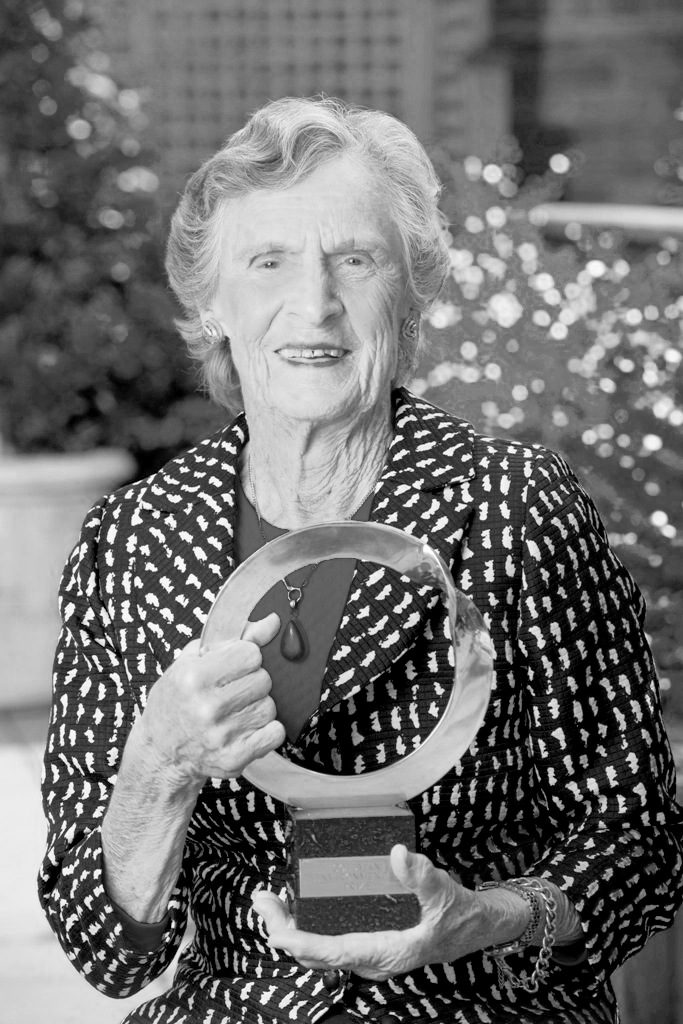


- International recognition that enhances their credibility
- Worldwide visibility for the issues they champion
- Financial support to pursue their vision of a renewed and protected environment

Study Suggests Tree-Filled Spaces Are More Favourable To Child Development Than Paved Or Grassy Surfaces
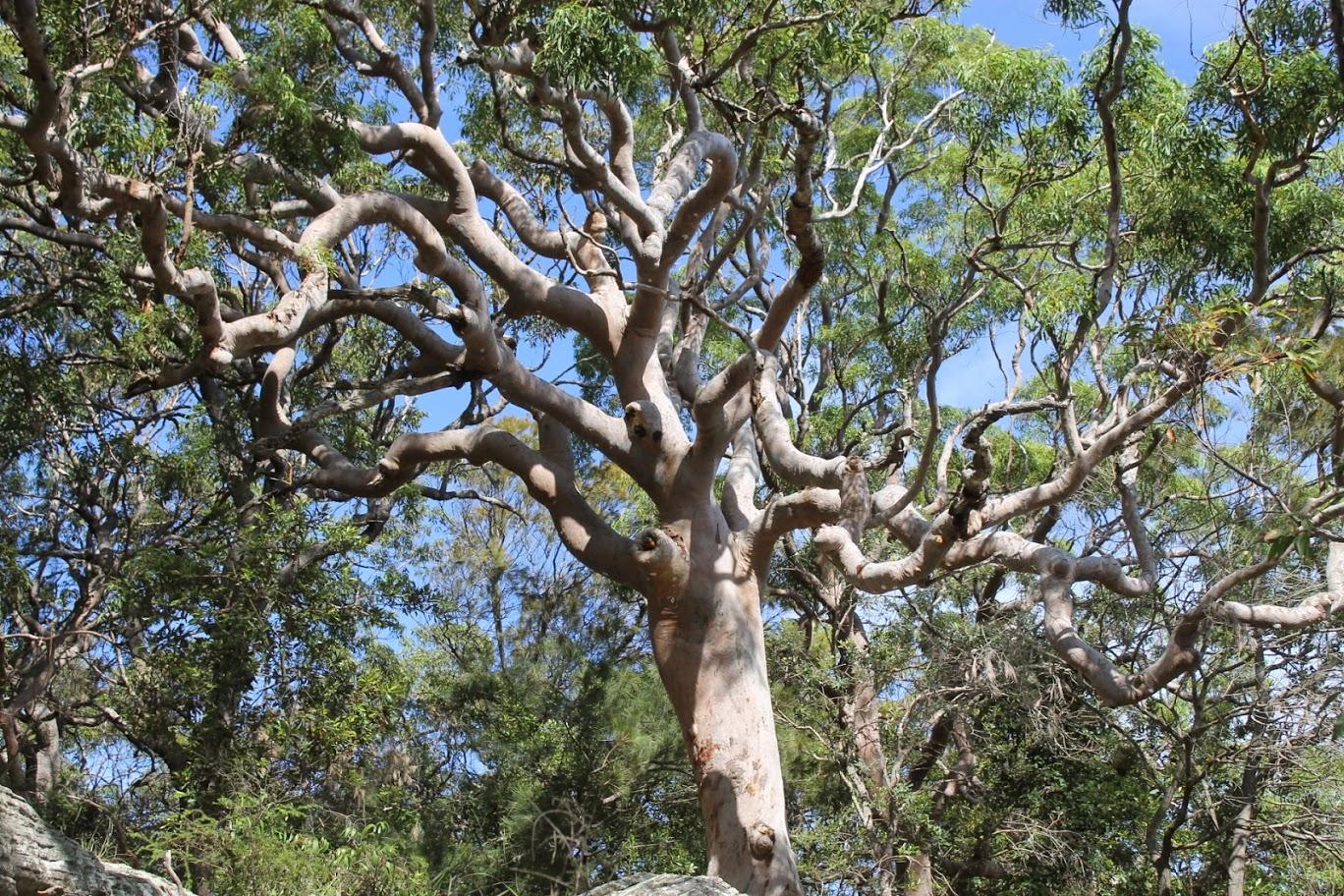
Critically Endangered Spotted Tree Frogs Hop Back Into The Wild
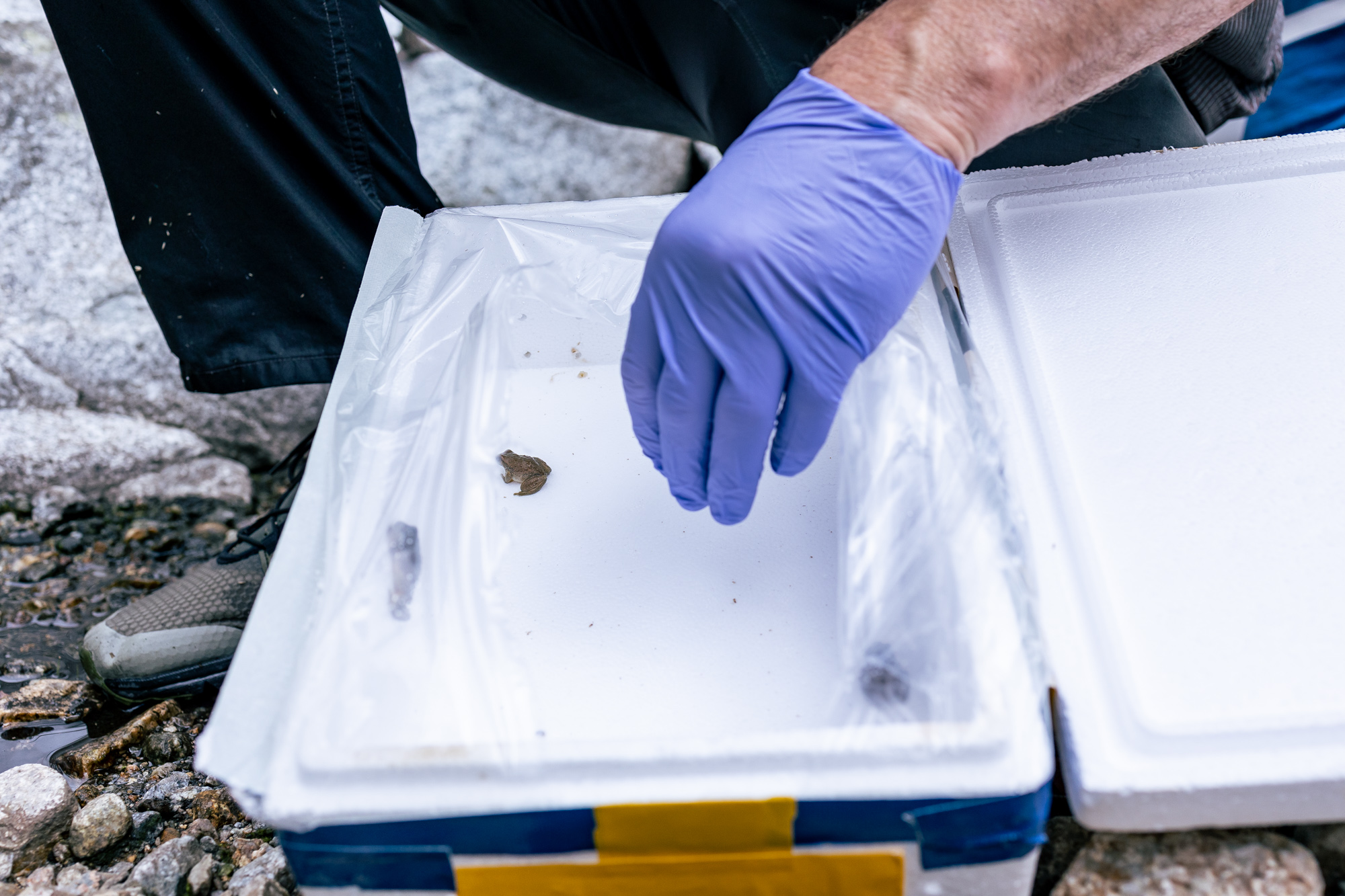
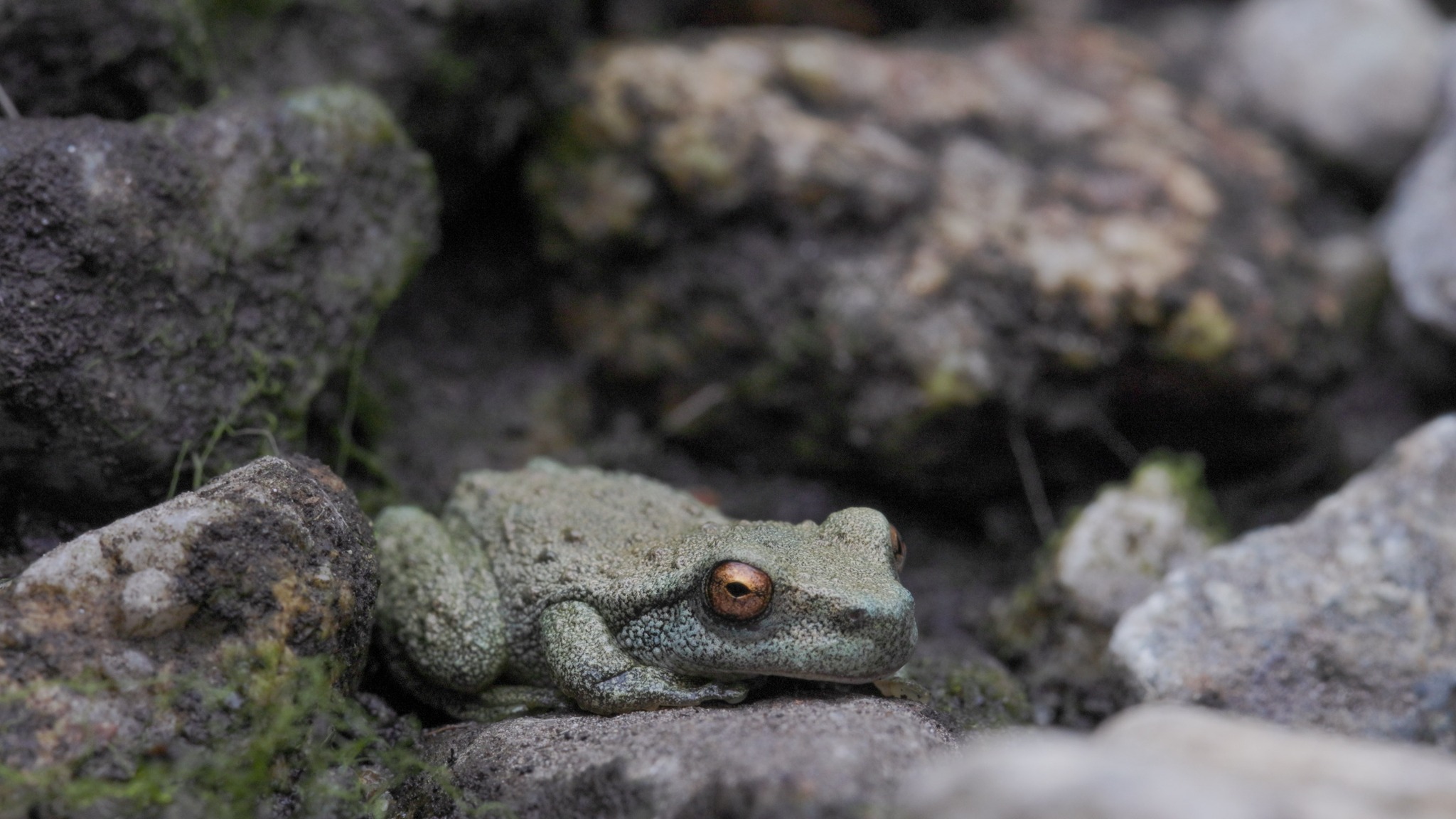
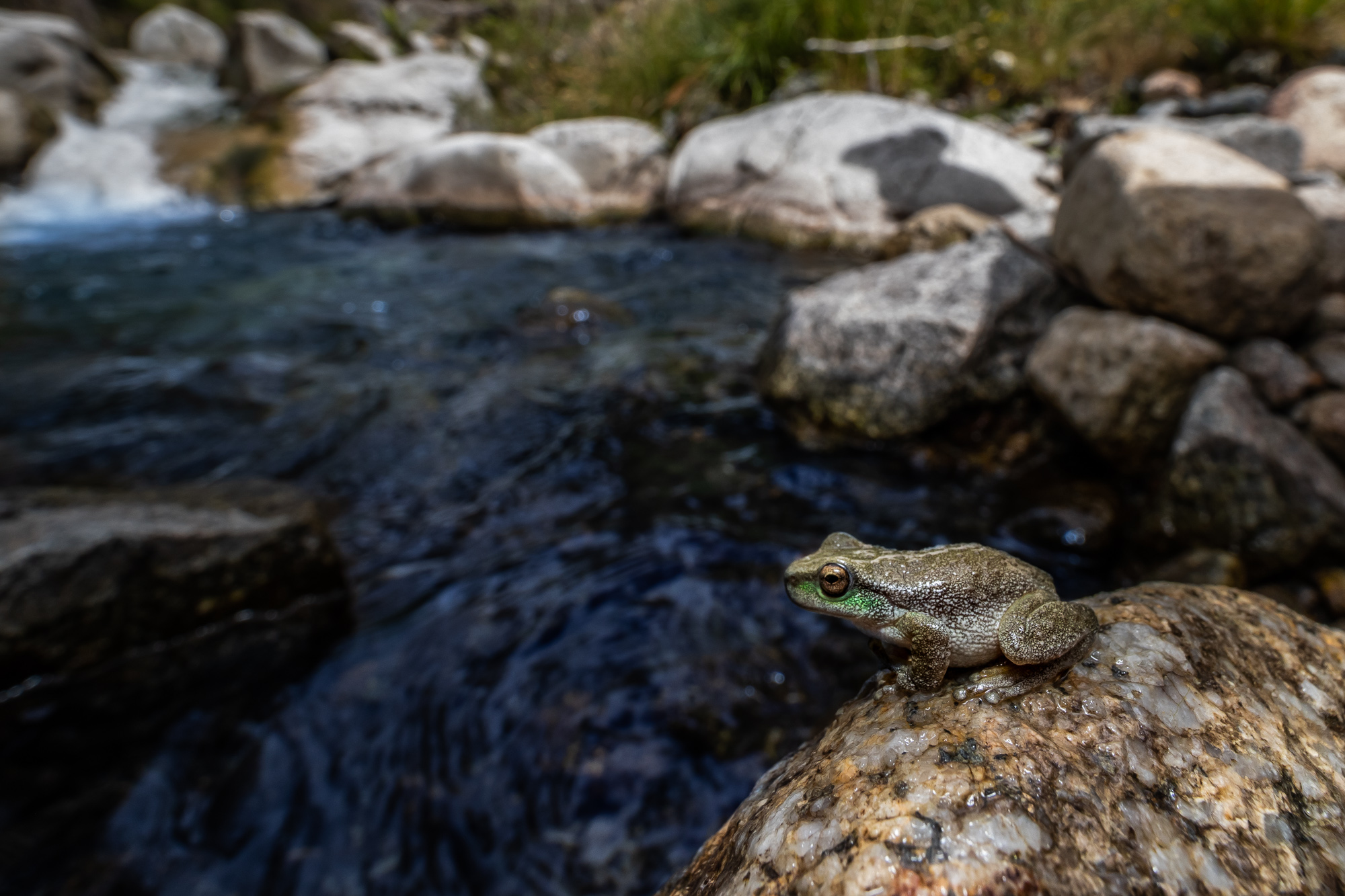
NSW Releases Australia's Largest Investment In Koalas
- $107.1 million for koala habitat conservation, to fund the protection, restoration, and improved management of 47,000 hectares of koala habitat
- $19.6 million to supporting local communities to conserve koalas
- $23.2 million for improving the safety and health of koalas by removing threats, improving health and rehabilitation, and establishing a translocation program
- $43.4 million to support science and research to build our knowledge of koalas.
- Partnering with Taronga Conservation Society Australia to restore more than 5,000 hectares of Box Gum grassy woodlands around the Western Slopes of the Great Dividing Range. Koalas will be translocated to the site once the woodland is re-established.
- Partnering with World Wide Fund for Nature (WWF) Australia to protect 500 hectares of high quality koala habitat on private land under conservation agreements across the Northern Rivers region through the Biodiversity Conversation Trust.
- Working with volunteer wildlife rehabilitators, vets and other partner organisations to enhance co-ordination of emergency response for koalas and other wildlife due to bushfire or extreme weather events.
More Good News For Koalas
- In the state’s south, we have purchased 1,052 hectares adjoining Macanally State Conservation Area.
- Along the state’s north, we have purchased 752 hectares adjoining Bundjalung National Park and Bundjalung State Conservation Area.
- On the mid-north coast, 201 hectares of land will connect two separate sections of Killabakh Nature Reserve.
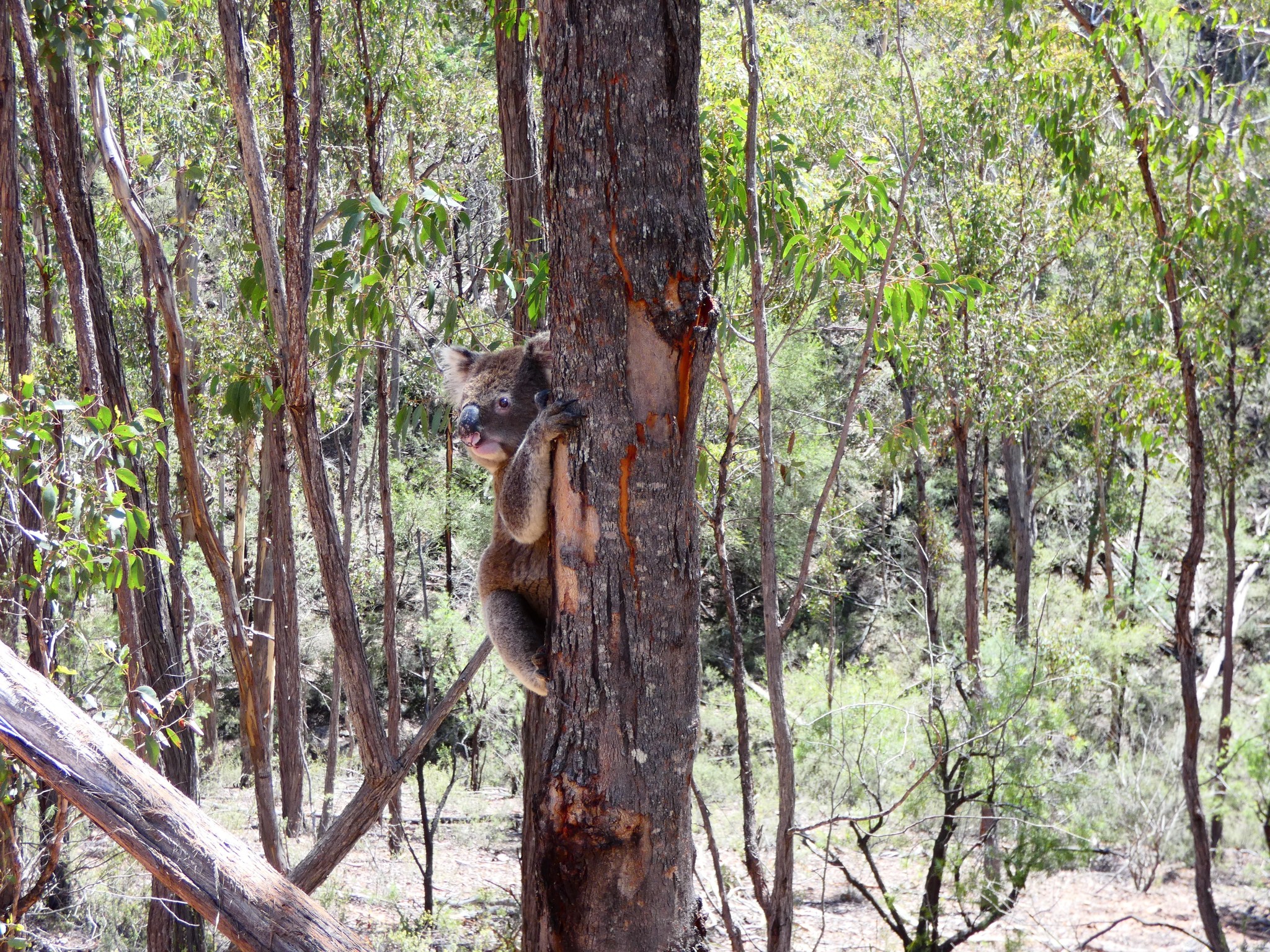
Humans Disrupting 66-Million-Year-Old Feature Of Ecosystems
Breakthrough In Estimating Fossil Fuel Carbon Dioxide Emissions
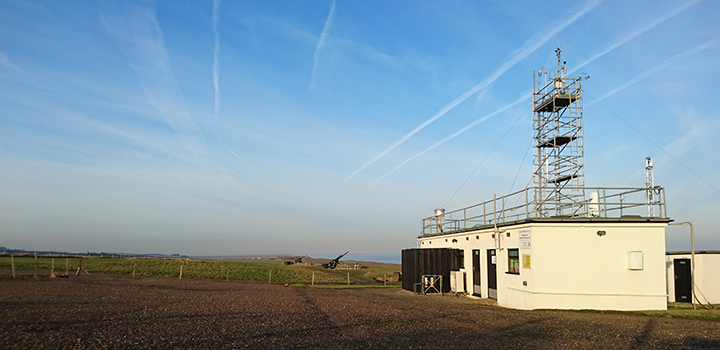 In a study published today they quantified regional fossil fuel CO2 emissions reductions during the Covid-19 lockdowns of 2020-2021, using atmospheric measurements of CO2 and oxygen (O2) from the Weybourne Atmospheric Observatory, on the north Norfolk coast in the UK.
In a study published today they quantified regional fossil fuel CO2 emissions reductions during the Covid-19 lockdowns of 2020-2021, using atmospheric measurements of CO2 and oxygen (O2) from the Weybourne Atmospheric Observatory, on the north Norfolk coast in the UK.New Global Forecasts Of Marine Heatwaves Foretell Ecological And Economic Impacts
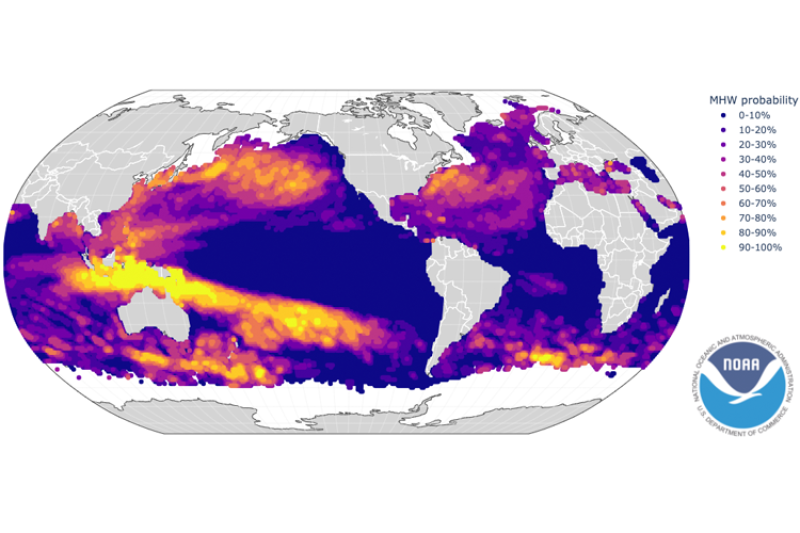
- Fish and shellfish declines that caused global fishery losses of hundreds of millions of dollars
- Shifting distributions of marine species that increased human-wildlife conflict and disputes about fishing rights
- Extremely warm waters that have caused bleaching and mass mortalities of corals
Frozen sperm and assisted reproduction: time to pull out all stops to save the endangered koala
Lachlan G. Howell, Deakin University and Ryan R. Witt, University of NewcastleAustralia’s wildlife was hit hard by the 2019-20 Black Summer megafires.
Amongst the casualties were our iconic tree-dwelling koalas, with an estimated 5000 dead in New South Wales alone. They are now officially endangered in three states and territories.
In response, researchers are ramping up captive breeding to prevent extinction. Unfortunately, captive breeding faces two major challenges: it’s expensive, and it can be hard to maintain genetic diversity.
To tackle both issues, our new modelling study backs the approach of biobanking (freezing koala sperm) and tailored assisted reproduction techniques. We found these techniques would result in a five-fold decrease in the costs of running captive breeding programs.
Despite their promise, these reproductive tools have not yet become widely used in conservation. With koalas facing an uncertain future, it’s time to explore their full potential. If we get this right, we could use the same tools to help other species in rapid decline.
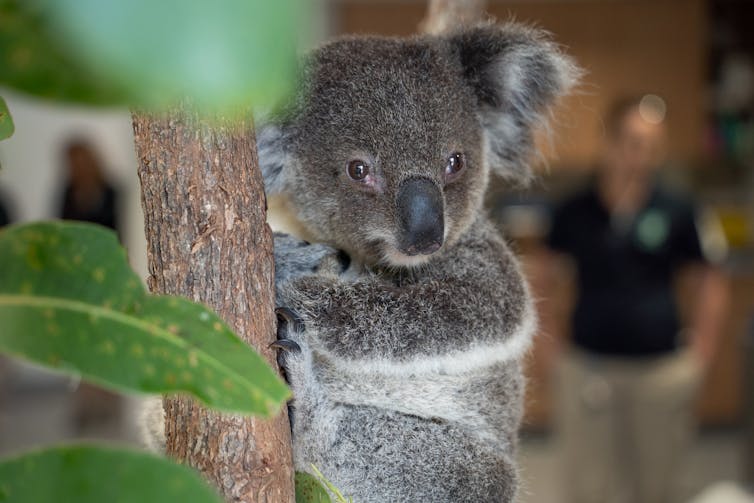
What Are These Techniques?
In animals, biobanking refers to freezing and storing sperm, eggs and embryos, as well as other cells and tissues from the body. These techniques have long been used in agriculture to store valuable sperm from top breeding bulls and crops in seed banks.
Most people are aware of in vitro fertilisation (IVF), a common assisted reproductive technology, but other options exist such as artificial insemination and direct sperm injection into the egg. In humans, IVF and sperm injection have dramatically improved fertility while artificial insemination has revolutionised the breeding of livestock.
Models Show Huge Drop In Costs And Less Inbreeding
In our modelling, we set the goal of maintaining at least 90% of the genetic diversity in the captive population over a century.
We compared conventional natural breeding programs to programs mixing natural breeding with frozen koala sperm from wild animals delivered by artificial insemination or direct sperm injection.
We found supplementing captive breeding with frozen sperm would dramatically slow inbreeding rates, produce genetically healthier animals and require fewer animals to be held in breeding colonies.
To reach the genetic target, you would need 223 koalas in a conventional captive program. By contrast, adding assisted reproduction means you’d only have to keep 17 koalas.
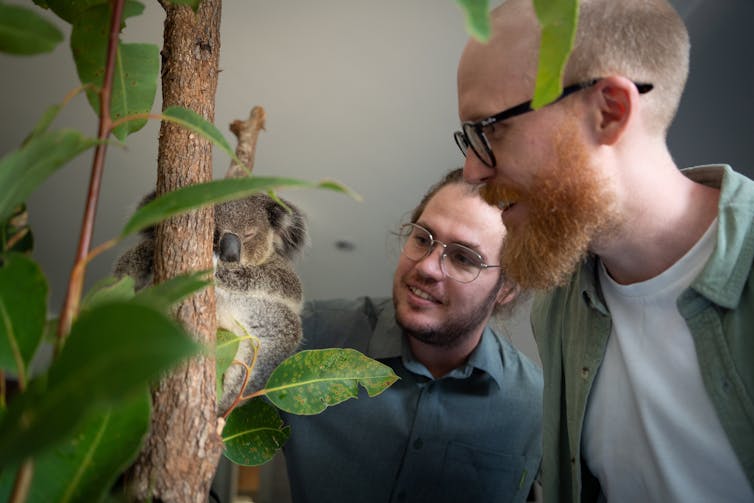
These much smaller colony sizes are what drives down the cost. When you factor in the costs of assisted reproduction, including sperm freezing and performing artificial insemination or sperm injection, you still end up with a more than five-fold reduction in costs.
Let’s Put These Technologies To Work
While these technologies have proven their worth for us and for livestock, we largely haven’t put them to work in wildlife recovery. We believe this is a missed opportunity to cut costs and boost genetic diversity.
The few programs which have embraced these techniques have seen success. North America’s black-footed ferret is coming back from the edge of extinction, aided in part by assisted reproduction techniques. In the 1980s, the last remaining 18 black-footed ferrets were brought into a captive breeding program in America. Because the genetic diversity was so low, researchers used artificial insemination and frozen sperm to reintroduce lost genes and reduce the damage from inbreeding.
What Do We Need To Do?
In recent years, we’ve seen significant investment in frozen storage and genomic sequencing of tissue samples collected from wild koalas.
These technologies are useful to take stock of the genetic health of koala populations. But they can’t help us restore lost genetic diversity to wild populations because the frozen tissue samples cannot be turned into living animals.
While we’ve seen some progress in tailoring these technologies to koalas, there’s more to do. To date, 34 koala joeys have been born using artificial insemination in tame zoo koalas. These joeys, however, came from fresh or chilled sperm, not frozen. To use frozen sperm requires more research and technology development. Other procedures like embryo transfer and cryopreservation of sperm will also need more development.
If we perfect these techniques and technologies, we could see new possibilities for koala conservation.
These include:
- using genetic material from dead or sick koalas which would otherwise be lost
- preserving gene pools from genetically important koala populations at risk of extinction
- protecting the species against catastrophic events in the wild linked to climate change, disease and bushfire, which can cause major genetic loss
- reducing inbreeding in captive breeding programs and producing genetically fit koalas for release
- overcoming issues of separated populations and ensuring desirable breeding pairs can actually breed
- tackling relocation issues emerging from the varying diets of koalas across regions and risk of disease transfer.
We Already Have The Expertise
Australia already has a strong network of wildlife hospitals and zoos across the koala’s range in eastern Australia, as well as existing captive colonies and technical and husbandry expertise.
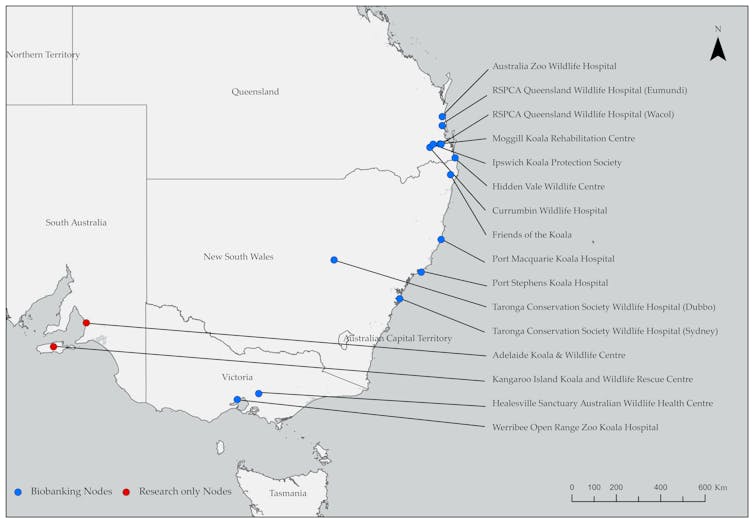
With a relatively small amount of funding (A$3-4 million to start, A$1 million annually), these sites could be equipped to collect and store koala sperm from wild populations and help perfect the technologies we need to make this a reality.
Longer term, we could adapt these technologies for other endangered marsupials. The potential is real. All we need now is attention from researchers and funding bodies.![]()
Lachlan G. Howell, Postdoctoral Research Fellow | Centre for Integrative Ecology, Deakin University and Ryan R. Witt, Postdoctoral Researcher and Honorary Lecturer | School of Environmental and Life Sciences, University of Newcastle
This article is republished from The Conversation under a Creative Commons license. Read the original article.
Listen to the Albert’s lyrebird: the best performer you’ve never heard of
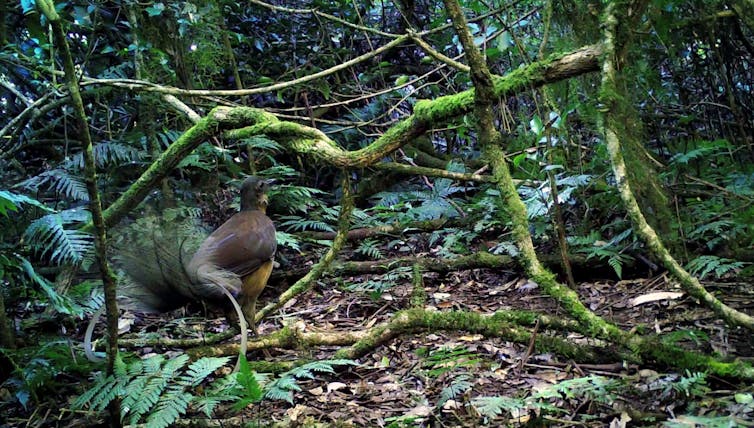
Am I not pretty enough? This article is part of The Conversation’s series introducing you to Australia’s unloved animals that need our help.
Mention the superb lyrebird, and you’ll probably hear comments on their uncanny mimicry of human sounds, their presence on the 10 cent coin, and their stunning tail. Far less known – but equally, if not more, impressive – is the Albert’s lyrebird.
Like the superb lyrebird, the Albert’s lyrebird performs spectacular dance displays and, as our latest research shows, produces astounding mimicry of sounds from its environment. The Albert’s lyrebird is part of an ancient lineage of song birds, and even attracted the attention of Charles Darwin himself.
While the superb lyrebird is notoriously shy, the Albert’s lyrebird is more elusive still and is only found in a small region of subtropical rainforest hidden away in the mountainous areas of Bundjalung Country, on the border between New South Wales and Queensland.
Sadly, historical land clearing and recent bushfires have placed this species under threat, and a lack of information may be impeding its conservation. So let us introduce you to this shy performer and convince you that the Albert’s lyrebird is worthy of as much attention as its limelight-stealing sister species.
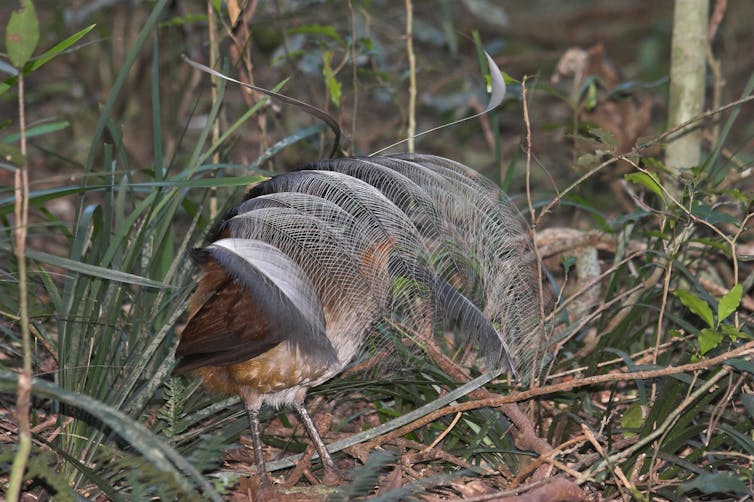
Impressive Displays
The Albert’s lyrebird (Menura alberti) is a large, ground-dwelling bird that forages by scratching up the soft, leaf-littered forest floor.
Both sexes have dark auburn-red feathers, and the male sports a showy tail made of silvery thread-like feathers that create a waterfall effect over his head during his courtship display. The display also reveals a bright, flame-like patch of orange feathers underneath his tail.
Like superb lyrebirds, male Albert’s lyrebirds hit the stage in midwinter. Hidden within the thick vegetation of the rainforest, they use clusters of vines or sticks as a platform to perform. The male Albert’s lyrebird then sings a remarkable song.
Impressively, they can accurately mimic up to 11 different species, including satin bowerbirds, Australian king-parrots, crimson rosellas and kookaburras, among others.
They also mimic multiple vocalisations from each species, as well as non-vocal sounds such as wingbeats. In fact, one lyrebird can mimic up to 37 different sounds!
Drama And ‘Whistle Songs’
In our latest research, we show each male arranges his mimicry into a particular order that’s repeated again and again throughout a performance. What’s more, all males within a location perform their mimicry in a similar order, suggesting this sequence is learnt from neighbouring males.
For example, lyrebirds at Binna Burra, in Lamington National Park, often mimic a kookaburra, followed by an eastern yellow robin, wingbeats, and the “tsit” of a green catbird. You can hear this shared sequence in the recordings below.
We’ve also discovered that males order their mimicry to place contrasting calls together within the sequence. This likely increases “drama”, and highlights the virtuosity of the male through the great diversity of sounds he can produce.
Lyrebirds not only mimic, but also sing their own songs, including their prominent whistle song – a striking melody we could hum or whistle along to, and during the dawn chorus the whistle songs of every lyrebird echo around the escarpments of their range.
These songs also vary from region to region, so each population has its unique set of whistle songs shared among the local males, which you can hear in the recordings below.
It’s not just the males that sing – female lyrebirds are shamefully underrated. Like female superb lyrebirds, female Albert’s lyrebirds sing both their own song and mimic the sounds of other birds.
They seem to often mimic alarm calls of eastern whipbirds, as well as grey goshawks, a fierce predator of lyrebirds.
While the Albert’s lyrebird may be most noticeable for its extravagant plumes and vocal virtuosity, they also likely play an important role in the local ecosystem.
Superb lyrebirds are “ecosystem engineers”, who turn over soil when foraging with their powerful claws, which can reduce bushfire fuel. Albert’s lyrebirds also rake the forest floor while foraging and are likely to have similar impacts.

A Threatened Species
Since European colonisation, Albert’s lyrebirds have endured a history of land clearing for agriculture, and were even once shot to put in pies!
As a result, they are listed nationally as “near threatened”, though this listing worsens to “vulnerable” in NSW, where the smallest population has an estimated 10 individuals.
The devastating 2019-2020 bushfires that engulfed Australia’s east coast burnt an estimated 32% of Albert’s lyrebirds habitat. As a result, Albert’s lyrebirds have now been listed as one of 13 priority bird species requiring urgent management after the fires.
Now, more than ever, it’s important to fully understand the behaviour and ecology of this species to ensure their survival.

What Can We Do?
The Albert’s lyrebird has escaped much public attention and has likely seen severe habitat loss after the fires. However, there is good news.
Citizen science initiatives in local council areas are helping to more accurately map Albert’s lyrebird occurrences, and improve habitat quality and connectivity by removing weeds.
Albert’s lyrebirds are not only important as an individual species, but also provide an entire soundscape through their diverse mimetic repertoires that they can perform for over an hour at a time.
They provide a soundtrack to our dwindling ancient rainforests, and are an important part of Australia’s natural and cultural history. Let’s ensure the next generation has the opportunity to meet this shy sister of the superb lyrebird.![]()
Fiona Backhouse, PhD Student in Behavioural Ecology, Western Sydney University; Anastasia Dalziell, Postdoctoral research fellow, University of Wollongong; Justin A. Welbergen, Associate Professor in Animal Ecology, Western Sydney University, and Robert Magrath, Professor of Behavioural Ecology, Research School of Biology, Australian National University
This article is republished from The Conversation under a Creative Commons license. Read the original article.
To make our wardrobes sustainable, we must cut how many new clothes we buy by 75%

If things don’t change fast, the fashion industry could use a quarter of the world’s remaining global carbon budget to keep warming under 2℃ by 2050, and use 35% more land to produce fibres by 2030.
While this seems incredible, it’s not. Over the past 15 years, clothing production has doubled while the length of time we actually wear these clothes has fallen by nearly 40%. In the EU, falling prices have seen people buying more clothing than ever before while spending less money in the process.
This is not sustainable. Something has to give. In our recent report, we propose the idea of a wellbeing wardrobe, a new way forward for fashion in which we favour human and environmental wellbeing over ever-growing consumption of throwaway fast-fashion.
What would that look like? It would mean each of us cutting how many new clothes we buy by as much as 75%, buying clothes designed to last, and recycling clothes at the end of their lifetime.
For the sector, it would mean tackling low incomes for the people who make the clothes, as well as support measures for workers who could lose jobs during a transition to a more sustainable industry.

Sustainability Efforts By Industry Are Simply Not Enough
Fashion is accelerating. Fast fashion is being replaced by ultra-fast fashion, releasing unprecedented volumes of new clothes into the market.
Since the start of the year, fast fashion giants H&M and Zara have launched around 11,000 new styles combined.
Over the same time, ultra-fast fashion brand Shein has released a staggering 314,877 styles. Shein is currently the most popular shopping app in Australia. As you’d expect, this acceleration is producing a tremendous amount of waste.
In response, the fashion industry has devised a raft of plans to tackle the issue. The problem is many sustainability initiatives still place economic opportunity and growth before environmental concerns.
Efforts such as switching to more sustainable fibres and textiles and offering ethically-conscious options are commendable. Unfortunately, they do very little to actually confront the sector’s rapidly increasing consumption of resources and waste generation.
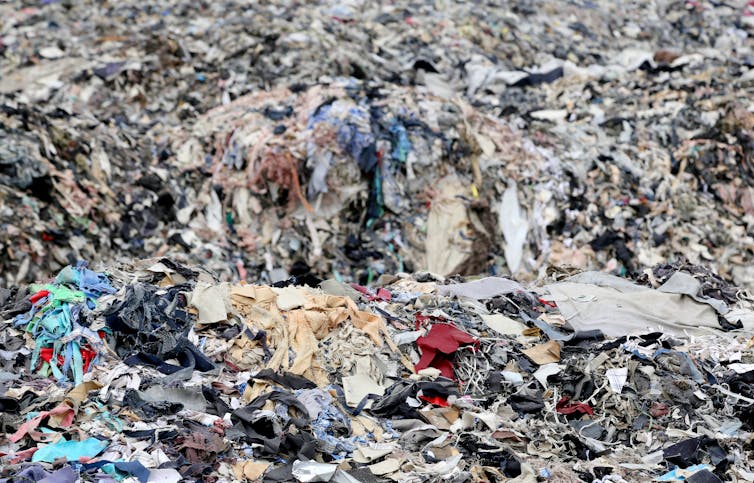
On top of this, labour rights abuses of workers in the supply chain are rife.
Over the past five years, the industry’s issues of child labour, discrimination and forced labour have worsened globally. Major garment manufacturing countries including Myanmar, Cambodia, Bangladesh and Vietnam are considered an “extreme risk” for modern slavery.
Here’s what we can do to tackle the situation.
1. Limit Resource Use And Consumption
We need to have serious conversations between industry, consumers and governments about limiting resource use in the fashion industry. As a society, we need to talk about how much clothing is enough to live well.
On an individual level, it means buying fewer new clothes, as well as reconsidering where we get our clothes from. Buying secondhand clothes or using rental services are ways of changing your wardrobe with lower impact.
2. Expand The Slow Fashion Movement
The growing slow fashion movement focuses on the quality of garments over quantity, and favours classic styles over fleeting trends.
We must give renewed attention to repairing and caring for clothes we already own to extend their lifespan, such as by reviving sewing, mending and other long-lost skills.
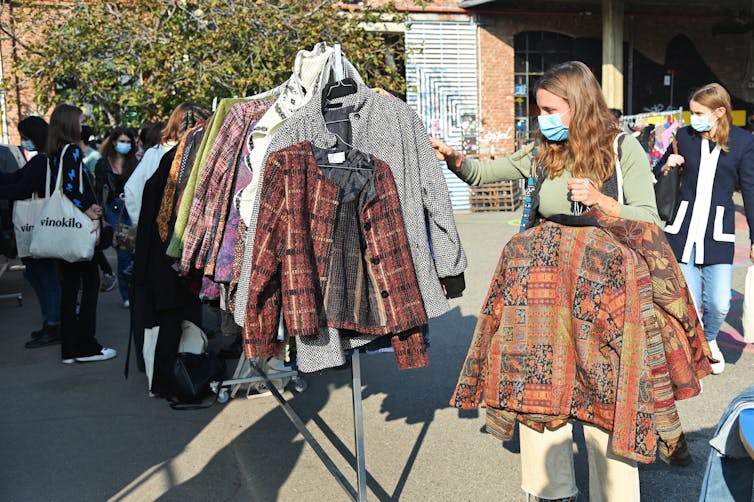
3. New Systems Of Exchange
The wellbeing wardrobe would mean shifting away from existing fashion business models and embracing new systems of exchange, such as collaborative consumption models, co-operatives, not-for-profit social enterprises and B-corps.
What are these? Collaborative consumption models involve sharing or renting clothing, while social enterprises and B-corps are businesses with purposes beyond making a profit, such as ensuring living wages for workers and minimising or eliminating environmental impacts.
There are also methods that don’t rely on money, such as swapping or borrowing clothes with friends and altering or redesigning clothes in repair cafes and sewing circles.
4. Diversity In Clothing Cultures
Finally, as consumers we must nurture a diversity of clothing cultures, including incorporating the knowledge of Indigenous fashion design, which has respect for the environment at its core.
Communities of exchange should be encouraged to recognise the cultural value of clothing, and to rebuild emotional connections with garments and support long-term use and care.
What Now?
Shifting fashion from a perpetual growth model to a sustainable approach will not be easy. Moving to a post-growth fashion industry would require policymakers and the industry to bring in a wide range of reforms, and re-imagine roles and responsibilities in society.
You might think this is too hard. But the status quo of constant growth cannot last.
It’s better we act to shape the future of fashion and work towards a wardrobe good for people and planet – rather than let a tidal wave of wasted clothing soak up resources, energy and our very limited carbon budget.![]()
Samantha Sharpe, Research Director, Institute for Sustainable Futures, University of Technology Sydney; Monique Retamal, Research Director, Institute for Sustainable Futures, University of Technology Sydney, and Taylor Brydges, Research Principal, University of Technology Sydney
This article is republished from The Conversation under a Creative Commons license. Read the original article.
China’s demand for seaborne coal is set to drop fast and far. Australia should take note.
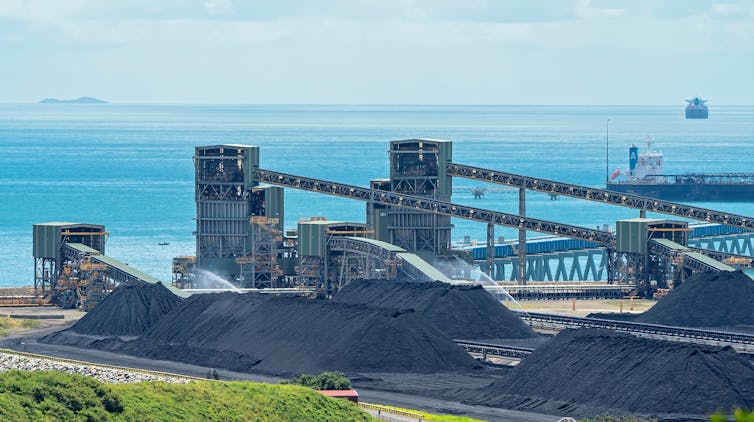
China’s plans to boost energy security and cut carbon emissions mean this year’s sudden boom for Australian coal exporters is just a blip.
Our new research explores the double pressures of China’s plans to bolster energy security in the wake of the Russian invasion of Ukraine while aiming to hit net zero within 40 years.
Our model suggests that if China sticks to its current climate pledges, thermal coal imports will drop by a quarter within three years from 210 megatonnes (Mt) in 2019 to 155Mt by 2025. That means Australian exports could fall by 20% by 2025, while Australian coking coal exports could fall even more. This is in stark contrast to predictions of stable demand or even continued growth by the Australian government.
How could this happen so quickly, when coal prices have roughly tripled compared to the last decade? In short, better infrastructure. China has invested in major rail projects, including a direct rail line to a major coking coal mine in Mongolia, as well as increasing use in scrap steel.
Coal’s Wild Ride In The Volatile 2020s
The last few years have been a rollercoaster for coal producers. For Australia’s major coal exporters, it’s been a wild ride.
After falling for some years, coal prices fell sharply as the COVID pandemic and resulting lockdowns led to a sharp decline in energy consumption. Adding to the pressure, China banned the imports of coal from Australia.
Before the disruption of the 2020s, China bought roughly a quarter of Australia’s exports of thermal coal (burned in power stations) and a similar share of coking coal exports (used in steelmaking).
In 2021, coal consumption and emissions shot back up after an unexpectedly strong economic rebound. Coal supplies were also disrupted due to COVID-related restrictions and workforce shortages. Together, these factors tripled coal spot prices to US$300 a tonne for thermal coal and US$450 a tonne for coking coal.
In China, the sudden scarcity of coal led to Australian coal held at its ports rushed through customs clearance. While the import ban formally remains in place, government data shows Australia has managed to divert most of its coal exports to countries such as India, Japan, South Korea, and Taiwan.
Chinese Energy Security Means A Drop In Australian Seaborne Coal
We expect all of these issues to be fairly short-lived. The big picture is China’s goal of net-zero emissions by 2060, and its interim target to peak emissions before 2030.
How will it do that? By expanding renewable power generation, increasing coal power station efficiency while reducing dependence on coal power longer term, and increased use of steel scrap. Better steel recycling will reduce demand for new steel, which requires two of Australia’s key exports, iron ore and coking coal. Reduced demand will inevitably affect China’s need to import coal.
For the next few years, coal will remain vital to China’s industrial strength and ability to power its cities. That’s where energy security comes in. China has invested heavily in freight railway capacity, in order to bring its own coal to its power and steel plants more cheaply.
It has also built rail connections to Tavan Tolgoi in neighbouring Mongolia, one of the world’s largest and cheapest sources of high-quality coking coal. With the new railway capacity, coking coal can now travel 1,200 kilometres to China’s steelmaking heartland in Hebei province, near Beijing.
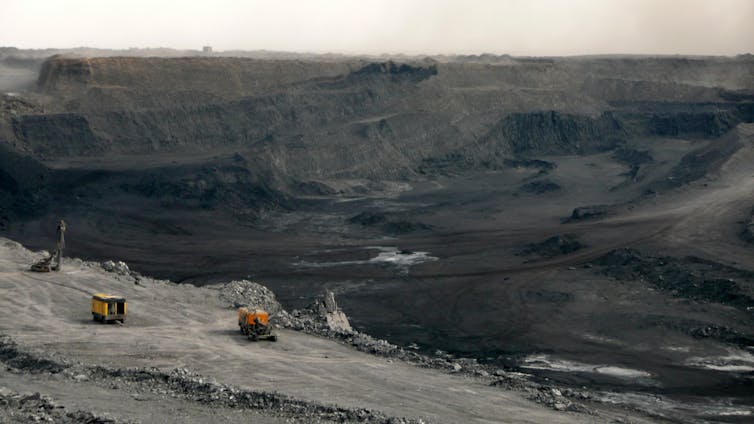
We took these factors into account in modelling different scenarios for Australian coal. We assume China will follow through on its existing climate policies.
In our scenarios, the largest losses would be borne by the biggest current suppliers of thermal coal to China. Number one exporter Indonesia could see its exports almost halved by 2025, falling from 125Mt in 2019 to as low as 65Mt.
Overall, China’s thermal coal imports should fall rapidly, dropping from 210Mt in 2019 to 155Mt by 2025. That means even if the embargo on Australian coal is lifted, our exports of thermal coal to China could still fall from 50Mt in 2019 to between 40 and 30 Mt in that timeframe, depending on China’s level of climate ambition. Coking coal exports could fall from 30Mt to as low as 20Mt.
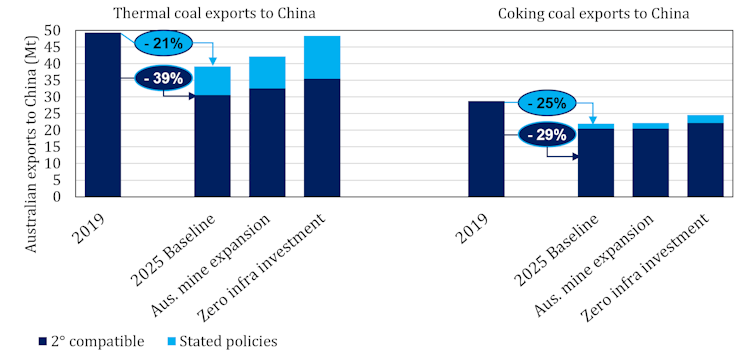
If the embargo remains in place, the drop in Chinese demand for seaborne coal will mean China’s current suppliers will shift back to competing in the global market, and push out Australian suppliers. The net effect on Australian exports will likely be comparable.
We also explored the scenario in which all of Australia’s currently planned coal mine expansions actually go ahead. We found even in this scenario, there would be little impact on the loss of market share in China. By contrast, if Mongolian mines expand, our model predicts they would readily fill Chinese market demand at the expense of Australian coking coal imports.
To get these predictions, we ran a cost optimisation model with greatly improved representations of transport networks. The model finds the lowest cost at which different mines could supply all of China’s power and steel plants. We did not factor in political choices based on energy security or concerns about “just transitions”, such as, for instance, a Chinese push to limit the pain for its substantial coal mining and trucking workforce.
Overall, our model makes clear China’s demand for coal – expected to plateau or fall over the next few years – coupled with its expansion of domestic mine and transport capacity will reduce the role for Australian coal. The world’s top buyer of coal will increasingly be able to supply its power and steel plants with domestically mined coal at competitive costs.
In turn, that means it will be less costly for China to depend on what it considers to be volatile markets. It will also be easier to impose politically motivated import restrictions on suppliers from what it considers unfriendly countries.
China’s ability to cut seaborne coal imports will grow further if its government increases its decarbonisation ambitions. These plans will be a key influence on the the remaining demand for seaborne coal.
Australia’s government and investors would be wise to consider these macro-level changes and plans as they look ahead, rather than focusing on short term gains from current market volatility.
Alex Turnbull, fund manager at Keshik Capital, contributed to this article and was a co-author of the published research. He personally holds no coal stocks.![]()
Jorrit Gosens, Research Fellow, Australian National University and Frank Jotzo, Professor, Crawford School of Public Policy and Head of Energy, Institute for Climate Energy and Disaster Solutions, Australian National University
This article is republished from The Conversation under a Creative Commons license. Read the original article.
Avalon Golf Course Bushcare Needs You


Pittwater Reserves: Histories + Notes + Others
A History Of The Campaign For Preservation Of The Warriewood Escarpment by David Palmer OAM and Angus Gordon OAM
Angophora Reserve - Angophora Reserve Flowers
Annie Wyatt Reserve - A Pictorial
Avalon's Village Green: Avalon Park Becomes Dunbar Park - Some History + Toongari Reserve and Catalpa Reserve
Bairne Walking Track Ku-Ring-Gai Chase NP by Kevin Murray
Bangalley Headland Bangalley Mid Winter
Banksias of Pittwater
Barrenjoey Boathouse In Governor Phillip Park Part Of Our Community For 75 Years: Photos From The Collection Of Russell Walton, Son Of Victor Walton
Barrenjoey Headland: Spring flowers
Barrenjoey Headland after fire
Bayview Baths
Bayview Wetlands
Beeby Park
Bilgola Beach
Botham Beach by Barbara Davies
Bungan Beach Bush Care
Careel Bay Saltmarsh plants
Careel Bay Birds
Careel Bay Clean Up day
Careel Bay Playing Fields History and Current
Careel Creek
Careel Creek - If you rebuild it they will come
Centre trail in Ku-ring-gai Chase National Park
Chiltern Track- Ingleside by Marita Macrae
Clareville Beach
Clareville/Long Beach Reserve + some History
Coastal Stability Series: Cabbage Tree Bay To Barrenjoey To Observation Point by John Illingsworth, Pittwater Pathways, and Dr. Peter Mitchell OAM
Cowan Track by Kevin Murray
Curl Curl To Freshwater Walk: October 2021 by Kevin Murray and Joe Mills
Currawong and Palm Beach Views - Winter 2018
Currawong-Mackerel-The Basin A Stroll In Early November 2021 - photos by Selena Griffith
Currawong State Park Currawong Beach + Currawong Creek
Deep Creek To Warriewood Walk photos by Joe Mills
Drone Gives A New View On Coastal Stability; Bungan: Bungan Headland To Newport Beach + Bilgola: North Newport Beach To Avalon + Bangalley: Avalon Headland To Palm Beach
Duck Holes: McCarrs Creek by Joe Mills
Dunbar Park - Some History + Toongari Reserve and Catalpa Reserve
Dundundra Falls Reserve: August 2020 photos by Selena Griffith - Listed in 1935
Elsie Track, Scotland Island
Elvina Track in Late Winter 2019 by Penny Gleen
Elvina Bay Walking Track: Spring 2020 photos by Joe Mills
Elvina Bay-Lovett Bay Loop Spring 2020 by Kevin Murray and Joe Mills
Fern Creek - Ingleside Escarpment To Warriewood Walk + Some History photos by Joe Mills
Iluka Park, Woorak Park, Pittwater Park, Sand Point Reserve, Snapperman Beach Reserve - Palm Beach: Some History
Ingleside
Ingleside Wildflowers August 2013
Irrawong - Ingleside Escarpment Trail Walk Spring 2020 photos by Joe Mills
Irrawong - Mullet Creek Restoration
Katandra Bushland Sanctuary - Ingleside
Lucinda Park, Palm Beach: Some History + 2022 Pictures
McCarrs Creek
McCarr's Creek to Church Point to Bayview Waterfront Path
McKay Reserve
Mona Vale Beach - A Stroll Along, Spring 2021 by Kevin Murray
Mona Vale Headland, Basin and Beach Restoration
Mount Murray Anderson Walking Track by Kevin Murray and Joe Mills
Mullet Creek
Narrabeen Creek
Narrabeen Lagoon Catchment: Past Notes Present Photos by Margaret Woods
Narrabeen Lagoon State Park
Narrabeen Lagoon State Park Expansion
Narrabeen Rockshelf Aquatic Reserve
Nerang Track, Terrey Hills by Bea Pierce
Newport Bushlink - the Crown of the Hill Linked Reserves
Newport Community Garden - Woolcott Reserve
Newport to Bilgola Bushlink 'From The Crown To The Sea' Paths: Founded In 1956 - A Tip and Quarry Becomes Green Space For People and Wildlife
Pittwater spring: waterbirds return to Wetlands
Pittwater's Lone Rangers - 120 Years of Ku-Ring-Gai Chase and the Men of Flowers Inspired by Eccleston Du Faur
Pittwater's Parallel Estuary - The Cowan 'Creek
Resolute Track at West Head by Kevin Murray
Resolute Track Stroll by Joe Mills
Riddle Reserve, Bayview
Salvation Loop Trail, Ku-Ring-Gai Chase National Park- Spring 2020 - by Selena Griffith
Stapleton Reserve
Stapleton Park Reserve In Spring 2020: An Urban Ark Of Plants Found Nowhere Else
The Chiltern Track
The Resolute Beach Loop Track At West Head In Ku-Ring-Gai Chase National Park by Kevin Murray
Towlers Bay Walking Track by Joe Mills
Trafalgar Square, Newport: A 'Commons' Park Dedicated By Private Landholders - The Green Heart Of This Community
Turimetta Beach Reserve by Joe Mills, Bea Pierce and Lesley
Turimetta Beach Reserve: Old & New Images (by Kevin Murray) + Some History
Turimetta Headland
Warriewood Wetlands and Irrawong Reserve
Whale Beach Ocean Reserve: 'The Strand' - Some History On Another Great Protected Pittwater Reserve
Winji Jimmi - Water Maze

New Shorebirds WingThing For Youngsters Available To Download
A Shorebirds WingThing educational brochure for kids (A5) helps children learn about shorebirds, their life and journey. The 2021 revised brochure version was published in February 2021 and is available now. You can download a file copy here.
If you would like a free print copy of this brochure, please send a self-addressed envelope with A$1.10 postage (or larger if you would like it unfolded) affixed to: BirdLife Australia, Shorebird WingThing Request, 2-05Shorebird WingThing/60 Leicester St, Carlton VIC 3053.

 Shorebird Identification Booklet
Shorebird Identification Booklet
The Migratory Shorebird Program has just released the third edition of its hugely popular Shorebird Identification Booklet. The team has thoroughly revised and updated this pocket-sized companion for all shorebird counters and interested birders, with lots of useful information on our most common shorebirds, key identification features, sighting distribution maps and short articles on some of BirdLife’s shorebird activities.
The booklet can be downloaded here in PDF file format: http://www.birdlife.org.au/documents/Shorebird_ID_Booklet_V3.pdf
Paper copies can be ordered as well, see http://www.birdlife.org.au/projects/shorebirds-2020/counter-resources for details.
Download BirdLife Australia's children’s education kit to help them learn more about our wading birdlife
Shorebirds are a group of wading birds that can be found feeding on swamps, tidal mudflats, estuaries, beaches and open country. For many people, shorebirds are just those brown birds feeding a long way out on the mud but they are actually a remarkably diverse collection of birds including stilts, sandpipers, snipe, curlews, godwits, plovers and oystercatchers. Each species is superbly adapted to suit its preferred habitat. The Red-necked Stint is as small as a sparrow, with relatively short legs and bill that it pecks food from the surface of the mud with, whereas the Eastern Curlew is over two feet long with a exceptionally long legs and a massively curved beak that it thrusts deep down into the mud to pull out crabs, worms and other creatures hidden below the surface.
Some shorebirds are fairly drab in plumage, especially when they are visiting Australia in their non-breeding season, but when they migrate to their Arctic nesting grounds, they develop a vibrant flush of bright colours to attract a mate. We have 37 types of shorebirds that annually migrate to Australia on some of the most lengthy and arduous journeys in the animal kingdom, but there are also 18 shorebirds that call Australia home all year round.
What all our shorebirds have in common—be they large or small, seasoned traveller or homebody, brightly coloured or in muted tones—is that each species needs adequate safe areas where they can successfully feed and breed.
The National Shorebird Monitoring Program is managed and supported by BirdLife Australia.
This project is supported by Glenelg Hopkins Catchment Management Authority and Hunter Local Land Services through funding from the Australian Government’s National Landcare Program. Funding from Helen Macpherson Smith Trust and Port Phillip Bay Fund is acknowledged.
The National Shorebird Monitoring Program is made possible with the help of over 1,600 volunteers working in coastal and inland habitats all over Australia.
The National Shorebird Monitoring program (started as the Shorebirds 2020 project initiated to re-invigorate monitoring around Australia) is raising awareness of how incredible shorebirds are, and actively engaging the community to participate in gathering information needed to conserve shorebirds.
In the short term, the destruction of tidal ecosystems will need to be stopped, and our program is designed to strengthen the case for protecting these important habitats.
In the long term, there will be a need to mitigate against the likely effects of climate change on a species that travels across the entire range of latitudes where impacts are likely.
The identification and protection of critical areas for shorebirds will need to continue in order to guard against the potential threats associated with habitats in close proximity to nearly half the human population.
Here in Australia, the place where these birds grow up and spend most of their lives, continued monitoring is necessary to inform the best management practice to maintain shorebird populations.
BirdLife Australia believe that we can help secure a brighter future for these remarkable birds by educating stakeholders, gathering information on how and why shorebird populations are changing, and working to grow the community of people who care about shorebirds.
To find out more visit: http://www.birdlife.org.au/projects/shorebirds-2020/shorebirds-2020-program
Aussie Bread Tags Collection Points

AvPals Newport Small Group Courses Return
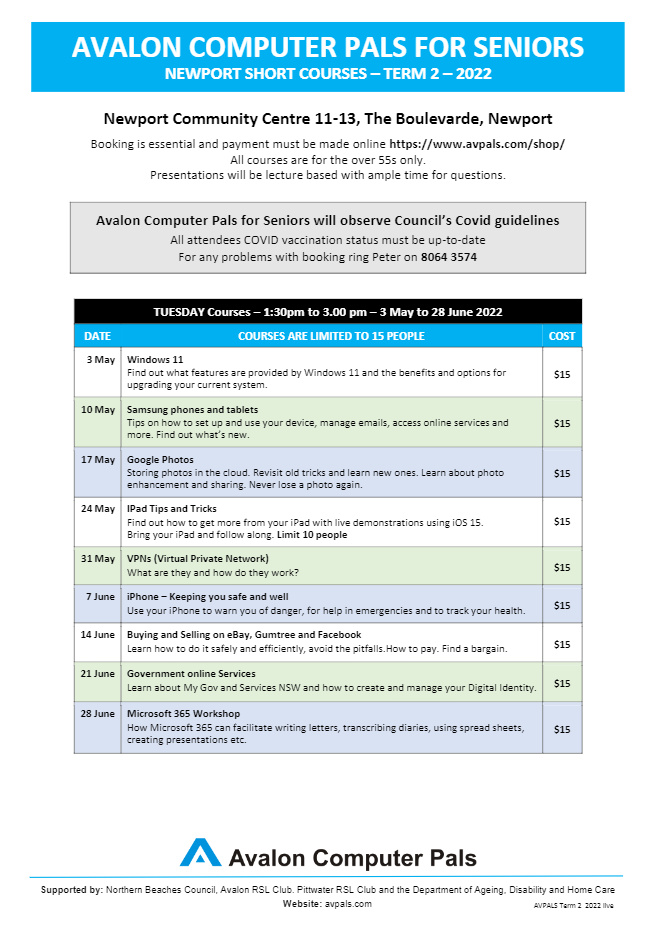
Policy Recommendations For The 47th Parliament
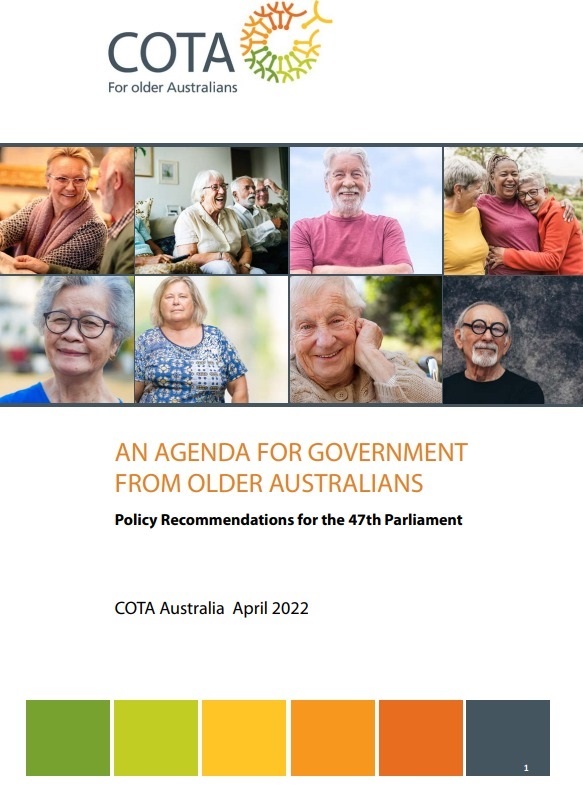
Fake News, Retirement Taxes And What We Should Talk About
Election 2022: Information You Need To Know
- are outside the electorate where you are enrolled to vote
- are more than 8km from a polling place
- are travelling
- are unable to leave your workplace to vote
- are seriously ill, infirm, or due to give birth shortly (or caring for someone who is)
- are a patient in hospital and can't vote at the hospital
- have religious beliefs that prevent you from attending a polling place
- are in prison serving a sentence of less than three years or otherwise detained
- are a silent elector
- have a reasonable fear for your safety.

Frankie Valli & The Four Seasons - Who Loves You (Official Music Video)
Calming Overexcited Neurons May Protect Brain After Stroke
Older Australians on the tough choices they face as energy costs set to increase

Australian aged care policy and programs are increasingly focused on what’s known as “successful ageing” – helping people feel satisfied, happier and healthier as they age. The goal is not just living longer, but also living better.
An essential part of ageing successfully is having enough energy for cooking, heating, cooling, cleaning, and leisure activities.
Being able to use energy in these ways can help prevent ill health or premature death, manage illness and chronic disease, sustain social relations, and support positive mental health.
Recent research I led focused on the role domestic energy consumption plays in supporting successful ageing. Over several months, we met with and interviewed 39 householders aged over 60 living in the New South Wales Illawarra region, from varying economic, social and cultural backgrounds, and housing arrangements.
We found clear associations between energy consumption and health and well-being outcomes. Many people told us they avoid using energy – risking even their health and well-being – to reduce costs.

When You Can’t Use The Clothesline Anymore
Carl is a 97-year-old widower who survived the sinking of two battleships during WWII. He now lives alone after his wife died following a long illness.
He recently had a couple of bad falls, which means he can no longer manage to use his clothesline outside to dry his laundry. Carl explains:
I’ve stopped using the outside line because I felt awkward. I’d have to put my stick down and lift things up, then I’d go wobbly. I fell a couple of times […] I have a dryer for emergencies, but I try not to use it because of the electricity costs […] It dries in the kitchen anyway.
To save on energy costs, Carl uses a kitchen pulley system to dry his clothing.
While he is just about able to manage, is he ageing successfully?
Carl’s worries about the cost of energy have led him to risk his health instead of choosing the safer and easier option of the dryer.
Comfort Versus Cost
We found other participants were rarely putting the heating on. Danielle, a 72-year-old woman who lives with her husband, told us:
My daughter was here last night. She complained about being cold. I gave her a blanket. I offered to put the heater on; I gave her a blanket instead.
Zack, an 89-year-old widower, only offers to put the reverse cycle air conditioner on when he has visitors.
I put it on yesterday afternoon because I knew the daughter was coming. But at times I just got a couple of throw rugs and just sit here and watch the television with that on.
This inability to live at a comfortable temperature was also an issue for Georgie, a 72-year-old woman who lives alone in a small unit. Despite the cold mornings in winter, Georgie has so far avoided buying a reverse cycle air conditioner due to the cost:
It’s really quite cold in here in the winter. In the morning […] I get up really early. I’m up by 5:00 in the morning, and it’s cold. But it [reverse cycle air conditioning] would be expensive to run.
Energy Supports Health And Socialising
Participants also had to consider energy costs associated with essential medical devices such as CPAP machines, chairlifts, and blood pressure and blood sugar monitors.
As Daisy, a 72-year-old married woman explains, her husband Joe relies on energy for his CPAP machine:
Really, I mean, that has to come first, the fact that he needs to breathe.
Many older Australians face a difficult choice between using energy to manage their health or face high energy bills they can ill afford.
We also found energy supports well-being; hosting friends for a cup of tea or initiating social connections is tough without energy.
Genevieve, aged 89, explains how her computer helps her keep in touch with family:
There is a little bit of communication between them regularly every time we have a meeting and, you know, little things, so it’s continual. So, I’m doing emails and little reports and little things like that on it.

Energy Policy Must Consider The Needs Of Older People
Existing Australian energy policy focuses on marketisation, productivity, efficiency, security and the clean energy transition, offering little focus on health and well-being.
On the other hand, health policies pay scant attention to the role domestic energy consumption plays.
With energy prices set to increase later this year, billing anxiety lingering and fuel insecurity looming, there’s a risk the health and well-being needs of older Australians are neglected.
What Would Help?
Our findings underscore the need for health, energy, and housing policy to be integrated to better support older people to age successfully, in homes fit for purpose – without constant worries about high energy bills.
Policies and programs geared towards energy cost savings such as solar installations, insulation and efficient appliances would help. So too would promoting access to higher value energy rebates for those with chronic health conditions.
Health professionals can help by guiding eligible Australians towards their entitlements.
By recognising that energy is a basic human need, essential for health and well-being, we can better support successful ageing.![]()
Ross Gordon, Professor, Queensland University of Technology
This article is republished from The Conversation under a Creative Commons license. Read the original article.
Word Of The Week: Family
Family Songs: A Mix
Listen to the Albert’s lyrebird: the best performer you’ve never heard of

Am I not pretty enough? This article is part of The Conversation’s series introducing you to Australia’s unloved animals that need our help.
Mention the superb lyrebird, and you’ll probably hear comments on their uncanny mimicry of human sounds, their presence on the 10 cent coin, and their stunning tail. Far less known – but equally, if not more, impressive – is the Albert’s lyrebird.
Like the superb lyrebird, the Albert’s lyrebird performs spectacular dance displays and, as our latest research shows, produces astounding mimicry of sounds from its environment. The Albert’s lyrebird is part of an ancient lineage of song birds, and even attracted the attention of Charles Darwin himself.
While the superb lyrebird is notoriously shy, the Albert’s lyrebird is more elusive still and is only found in a small region of subtropical rainforest hidden away in the mountainous areas of Bundjalung Country, on the border between New South Wales and Queensland.
Sadly, historical land clearing and recent bushfires have placed this species under threat, and a lack of information may be impeding its conservation. So let us introduce you to this shy performer and convince you that the Albert’s lyrebird is worthy of as much attention as its limelight-stealing sister species.

Impressive Displays
The Albert’s lyrebird (Menura alberti) is a large, ground-dwelling bird that forages by scratching up the soft, leaf-littered forest floor.
Both sexes have dark auburn-red feathers, and the male sports a showy tail made of silvery thread-like feathers that create a waterfall effect over his head during his courtship display. The display also reveals a bright, flame-like patch of orange feathers underneath his tail.
Like superb lyrebirds, male Albert’s lyrebirds hit the stage in midwinter. Hidden within the thick vegetation of the rainforest, they use clusters of vines or sticks as a platform to perform. The male Albert’s lyrebird then sings a remarkable song.
Impressively, they can accurately mimic up to 11 different species, including satin bowerbirds, Australian king-parrots, crimson rosellas and kookaburras, among others.
They also mimic multiple vocalisations from each species, as well as non-vocal sounds such as wingbeats. In fact, one lyrebird can mimic up to 37 different sounds!
Drama And ‘Whistle Songs’
In our latest research, we show each male arranges his mimicry into a particular order that’s repeated again and again throughout a performance. What’s more, all males within a location perform their mimicry in a similar order, suggesting this sequence is learnt from neighbouring males.
For example, lyrebirds at Binna Burra, in Lamington National Park, often mimic a kookaburra, followed by an eastern yellow robin, wingbeats, and the “tsit” of a green catbird. You can hear this shared sequence in the recordings below.
We’ve also discovered that males order their mimicry to place contrasting calls together within the sequence. This likely increases “drama”, and highlights the virtuosity of the male through the great diversity of sounds he can produce.
Lyrebirds not only mimic, but also sing their own songs, including their prominent whistle song – a striking melody we could hum or whistle along to, and during the dawn chorus the whistle songs of every lyrebird echo around the escarpments of their range.
These songs also vary from region to region, so each population has its unique set of whistle songs shared among the local males, which you can hear in the recordings below.
It’s not just the males that sing – female lyrebirds are shamefully underrated. Like female superb lyrebirds, female Albert’s lyrebirds sing both their own song and mimic the sounds of other birds.
They seem to often mimic alarm calls of eastern whipbirds, as well as grey goshawks, a fierce predator of lyrebirds.
While the Albert’s lyrebird may be most noticeable for its extravagant plumes and vocal virtuosity, they also likely play an important role in the local ecosystem.
Superb lyrebirds are “ecosystem engineers”, who turn over soil when foraging with their powerful claws, which can reduce bushfire fuel. Albert’s lyrebirds also rake the forest floor while foraging and are likely to have similar impacts.

A Threatened Species
Since European colonisation, Albert’s lyrebirds have endured a history of land clearing for agriculture, and were even once shot to put in pies!
As a result, they are listed nationally as “near threatened”, though this listing worsens to “vulnerable” in NSW, where the smallest population has an estimated 10 individuals.
The devastating 2019-2020 bushfires that engulfed Australia’s east coast burnt an estimated 32% of Albert’s lyrebirds habitat. As a result, Albert’s lyrebirds have now been listed as one of 13 priority bird species requiring urgent management after the fires.
Now, more than ever, it’s important to fully understand the behaviour and ecology of this species to ensure their survival.

What Can We Do?
The Albert’s lyrebird has escaped much public attention and has likely seen severe habitat loss after the fires. However, there is good news.
Citizen science initiatives in local council areas are helping to more accurately map Albert’s lyrebird occurrences, and improve habitat quality and connectivity by removing weeds.
Albert’s lyrebirds are not only important as an individual species, but also provide an entire soundscape through their diverse mimetic repertoires that they can perform for over an hour at a time.
They provide a soundtrack to our dwindling ancient rainforests, and are an important part of Australia’s natural and cultural history. Let’s ensure the next generation has the opportunity to meet this shy sister of the superb lyrebird.![]()
Fiona Backhouse, PhD Student in Behavioural Ecology, Western Sydney University; Anastasia Dalziell, Postdoctoral research fellow, University of Wollongong; Justin A. Welbergen, Associate Professor in Animal Ecology, Western Sydney University, and Robert Magrath, Professor of Behavioural Ecology, Research School of Biology, Australian National University
This article is republished from The Conversation under a Creative Commons license. Read the original article.
More than just MasterChef: a brief history of Australian cookery competitions

Australians were involved in competitive cookery long before MasterChef.
The earliest of Australia’s cooking competitions were at agricultural shows. In 1910, the Royal Agricultural Society of NSW hosted its first competition for “perishable foods” at the Royal Easter Show.
Along with pastry and pickles, competitors could also be judged on their calf’s foot jelly.
By the 1920s, the cookery category at the Easter Show had been firmly established. It was purely the preserve of women. Men were prohibited from entering and wouldn’t be allowed to enter until after the second world war.
Women living in NSW and the ACT also entered their wares in the Country Women’s Association’s The Land Cookery Competition. Starting in 1949, the competition judged women on their ability to bake classics such as fruit cake, butter cake and lamingtons, offering modest prize money to the winners. It is still running today.
These competitions are grounded in a history of cooking which saw women as “cooks” and men as “chefs”. Women were amateurs working in the home, while men worked in professional kitchens. This phenomenon continues today.
Cookery competitions allowed women to receive recognition for their often-overlooked hard work and skill. Contestants were encouraged to break out of their comfort zones, to be creative, innovate and impress.
Magazine Cookery Competitions
With women as their key demographic, it is little wonder that, by the 1960s, women’s magazines such as the Australian Women’s Weekly began hosting large-scale cookery competitions open to readers around the country.
Perhaps the most extravagant of these competitions was the Butter-White Wings Bake-Off, which ran from 1963 to 1970. The competition pitted Australia’s best home bakers against each other in a variety of categories, including cakes, desserts, main courses and “busy lady recipes”.

Entering their written recipes, contestants competed at state level for a chance to win a trip to the national final where they would cook for illustrious judges.
Thousands competed at the state level of these competitions, and one from each state and territory would go on to the final. These were held in either Sydney or Melbourne in front of live audiences, usually in the middle of a department store.
The 1970 final was televised, with the Weekly estimating two million viewers would watch the proceedings.
It was Australia’s first televised cooking competition.
Marketing And Celebrities
Just as MasterChef is sponsored by advertisers, the cookery competitions hosted in the Weekly proved to be lucrative marketing opportunities for a variety of sponsors. The prizes, provided by sponsors such as Breville and QANTAS, included cash, fur coats, appliances, cars and overseas holidays.
The choice of judges also offers us a glimpse of the glamour associated with the competitions as well as the continued gendered expectations surrounding cookery. A slew of early “celebrity chefs” were flown in from exotic, international destinations to judge the competition – including the Galloping Gourmet himself, Graham Kerr.
These celebrity chefs judged the main course section; the overtly feminine baking sections were judged primarily by women.

It was in the cake section that contestants really went above and beyond, both in the recipes themselves and in their names. In 1968, prize-winning recipes included “Golden Crown Dessert”, “Marshmallow-Cherry Cake”, “Chocolate Gold Layer Cake” and “Peach Kuchen”.
Peach Kuchen, which won the “Busy Lady” section, was made with a packet of White Wings cake mix, a tin of peaches and some sour cream. The Bake-Off helped to popularise (and sell!) boxed cake mixes: even the “busy woman” could create delicious cakes deserving of accolades.
A Dizzying Progression
The last Butter-White Wings Bake-Off was held in 1970, but the magazine kept hosting cooking competitions. In 1980, Elizabeth Love was crowned “Best Cook in Australia.”
Her prize-winning menu included oysters in pastry cases, ballotine of duckling with baby vegetables and a red wine jus, mango sorbet and almond petits fours.
In a recent interview, Love reflected that her menu drew on the concepts of nouvelle cuisine, which was popular at the time. It was an ambitious menu for a home cook – however Love declared that she didn’t think it would do very well if she went on MasterChef today.

Her menu demonstrates the dizzying progression of Australian food over the past 40 years.
Cookery competitions like those held in the Weekly gradually disappeared, replaced instead by competitions on television, which have grown in popularity over the last two decades.
Like the magazine cookery competitions of the past, where contestants were inventive and used new and exciting ingredients, television competitions have also proved important for introducing the Australian palate to innovative cooking techniques and exotic ingredients.
Our ongoing fascination with cooking competition shows such as MasterChef reflects the prestige still on offer for those ambitious contestants who enter them, as well as the cultural importance of food. ![]()
Lauren Samuelsson, Honorary Fellow, University of Wollongong
This article is republished from The Conversation under a Creative Commons license. Read the original article.
Guide to the classics: Shakespeare’s Hamlet, the Everest of literature

Although I’m wary of declaring any literary work to be the greatest ever, Shakespeare’s Hamlet would be a frontrunner. It’s often proclaimed to be or voted Shakespeare’s best play (Google it). It has countless film adaptations, is widely referenced, and even gets a homage of sorts in The Simpsons.
Hamlet deserves such accolades because it offers the deepest of insights into the human condition; although this insight can be a little tricky to explain.
Let’s consider some of Shakespeare’s other popular, serious plays. Romeo and Juliet is a tale of forbidden love – the cliché drops effortlessly. Othello is about the horrors of jealousy. And Macbeth, with its Tarantino-grade account of regicide and its grim consequences, explores the dark side of ambition. So what about Hamlet?

Well … ah … It’s about when someone does something bad, and you’re pretty sure what they did wasn’t right, and you ought to do something about it, but you can’t find it within yourself to do this something, and your uncertainty and inaction cause you even more distress, but events roll on – as they always do – and everything ends up worse than if you’d done something in the first place. Maybe.
I’m being silly, but it’s my way of coping. For while I’m familiar with the woes associated with love, jealousy and ambition, my greatest grief is that time and again I did not act when the situation called for it. I was a coward. I’m certain that I’m far from alone in assessing my life this way. And this is why Hamlet, which depicts this state of inaction, is the Everest of literature.
An Overview Of The Play
Hamlet, the prince of Denmark, is a modern character. He attends the University of Wittenberg and is an intellectual. His father, the recently deceased king, also called Hamlet, was, in contrast to his son, a warrior.
In the play’s first scene, the ghost of old king Hamlet silently appears to Horatio, Hamlet’s friend. Upon seeing him, Horatio recalls the time when “in an angry parle [a battle], / He [the old king] smote the sledded Polacks on the ice.” This counterpoint to Hamlet’s famed inaction, like the ghost of the king itself, haunts the play.
We soon learn that the old king has only been dead two months and that Hamlet’s mother, Gertrude, has hastily married the new king, Hamlet’s uncle Claudius.
The ghost of Hamlet’s father returns, this time telling his son he was murdered – poisoned – by Claudius (it was “murder most foul”) and urging Hamlet to avenge his death.
The scene finishes with young Hamlet revealing reluctance:
The time is out of joint: – O cursed spite, / That ever I was born to set it right!

But the ever more troubled prince is uncertain whether the ghost even spoke the truth. He gains proof when he asks a troupe of actors to reenact the poisoning before Claudius and Claudius reacts strongly.
Now Hamlet really must avenge his father. The opportunity arises when, on his way to meet his mother, he comes upon Claudius praying. But Hamlet is beset by doubts and cannot kill Claudius.
Hamlet goes on to confront his mother about her hasty marriage. While arguing with her, he stabs Polonius (the father of Ophelia, the woman he has been courting), who had been planted behind a curtain to spy on him.
Polonius’s son Laertes wants to avenge his father. He, unlike Hamlet, is willing to act.
Claudius, who now also wants Hamlet dead, arranges for Laertes to fight a duel with Hamlet with a poisoned rapier. They fight. Hamlet is cut by the rapier, and then Laertes is too. Meanwhile Hamlet’s mother accidentally consumes a poisoned drink intended for her son and dies.
Hamlet learns the truth of what has happened. He stabs Claudius, making him drink the poison too. Claudius dies, then Laertes dies, then finally, Hamlet dies. (South Park efficiently represents the final scene).
To Be Or Not To Be – Or Maybe Not
I had expected to illustrate Hamlet’s struggle to act with an analysis of the most famous speech in all of Shakespeare: ‘To be, or not to be’ (Act III Scene I). It begins with these oft-quoted lines:
To be, or not to be, that is the question:
Whether ‘tis nobler in the mind to suffer
The slings and arrows of outrageous fortune,
Or to take arms against a sea of troubles
But now I’m not so sure it’s a good idea. “To be, or not to be” is ambiguous. Also, Hamlet probably knows he is being watched by the king or others while he is speaking, and thus is not really speaking his mind.
Arguably, Hamlet’s definitive speech in the play comes just before this one, at the end of Act II. In this red-blooded soliloquy, he berates himself for his inaction, asking, “am I a coward?” and reflects that he lacks the gall, “To make oppression bitter”.
He says, ‘I should have fatted all the region kites / With this slave’s offal’; i.e. murdered Claudius and fed his guts to the carrion eaters.
He also mocks his proclivity to seek solace in words:
Why, what an ass am I! Ay, sure, this is most brave;
That I, the son of a dear father murder’d,
Prompted to my revenge by heaven and hell,
Must, like a whore, unpack my heart with my words…
The Refusal Of The Call To Adventure
Shakespeare’s play is notable because it tells of one who, to draw on Joseph Campbell’s enduring concept of the “hero’s journey”, refuses “the call to adventure”.
So many of the stories we consume involve some sort of heroic quest where a reluctant hero accepts this call. Observe Frodo in Lord of the Rings or Luke Skywalker’s ambivalence around the call in Star Wars. Both heroes end up defeating evil. And while they are changed by the experience (not entirely for the better), one senses that refusing the call would have led to worse outcomes.
Hamlet’s inaction – his refusal of the call – directly or indirectly causes eight deaths, including his own. If he had acted, then probably only Claudius would have died.

The moral of the story is that there is risk in action, but the greater risk lies in inaction. In short, action, in bad situations, is the lesser of two evils.
But maybe this isn’t the moral. Maybe the play is not exhorting the audience to act, but asking a deeper question. Namely, what does it mean for us to cross the threshold that separates reason from power? That is, what does it mean for us to abandon reason and strike back at the monster?
Reason appeals to principles. It appeals to the capacity for reason in others. It doesn’t take the law into its own hands. But what if it is sometimes reasonable to abandon reason and strike at power with power? Can reason survive such a decision?
The Endless Appeal Of Hamlet
Hamlet is not only successful because Hamlet himself embodies our own struggles. Hamlet is also staggeringly quotable – the quip is that there are too many quotations in it.
The play’s appeal also lies in the depth of the secondary characters, such as Ophelia, Polonius and the inseparable Rosencrantz and Guildenstern (Hamlet’s friends from university).

And the play is seductively enigmatic. We are unsure whether Hamlet’s mother was in on the murder of the old king, whether Polonius is indeed a fool, whether Hamlet loses his mind, and so on. Where there are mysteries, there are detectives.
Hamlet turns up everywhere in Western culture – not just in The Simpsons and South Park.
Given all the trouble Hamlet has with his father and mother, it’s not surprising that Freud saw something Oedipal in the whole business.
Ophelia, who suffers the double tragedy of her own demise and being less discussed than Hamlet despite having a compelling struggle and brilliant lines (“we know what we are, but / know not what we may be”), is referenced in Eliot’s The Waste Land. Her words, “Good night, ladies; good night, sweet ladies; good night, good night” provide a foreboding conclusion to the ghastly pub scene in Part II of Eliot’s poem.
And for the Star Wars fans (one Star Wars reference is never enough), Chewbacca has his own “Alas, poor Yorick” moment when he is reassembling C3P0 in Empire Strikes Back (Yorick was a jester who entertained Hamlet when Hamlet was a boy).
Compare this with Kenneth Branagh’s version.
Memento Mori
All this said, and with Yorick in mind, what stands out most for me in Hamlet is the dark and beautiful graveyard scene at the beginning of Act V.

Polonius is dead. Ophelia, whom Hamlet probably loved, is dead. The bloody final sequence is nigh.
And the play pauses.
Two gravediggers have a wry debate about whether or not Ophelia committed suicide as they are digging her grave. It’s a moment of blackest comedy.
The gravediggers unearth Yorick’s skull. After Hamlet’s “Alas, poor Yorick! – I knew him”, Hamlet reflects that the most famous people, such as Alexander the Great and the Roman emperor Caesar, ended up no different to Yorick.
Imperious Caesar, dead and turned to clay
Might stop a hole to keep the wind away.
Oh, that that earth, which kept the world in awe,
Should patch a wall to expel the winter’s flaw!
Despite exploring the most serious aspects of the human condition, Shakespeare, with this memento mori, seems to be reminding us that existence has something of the cosmic joke about it. This is reminiscent of the ending of Life of Brian. Roll the credits.![]()
Dr Jamie Q Roberts, Lecturer in Politics and International Relations, University of Sydney
This article is republished from The Conversation under a Creative Commons license. Read the original article.
‘Weaponised irony’: after fictionalising Elizabeth Macarthur’s life, Kate Grenville edits her letters
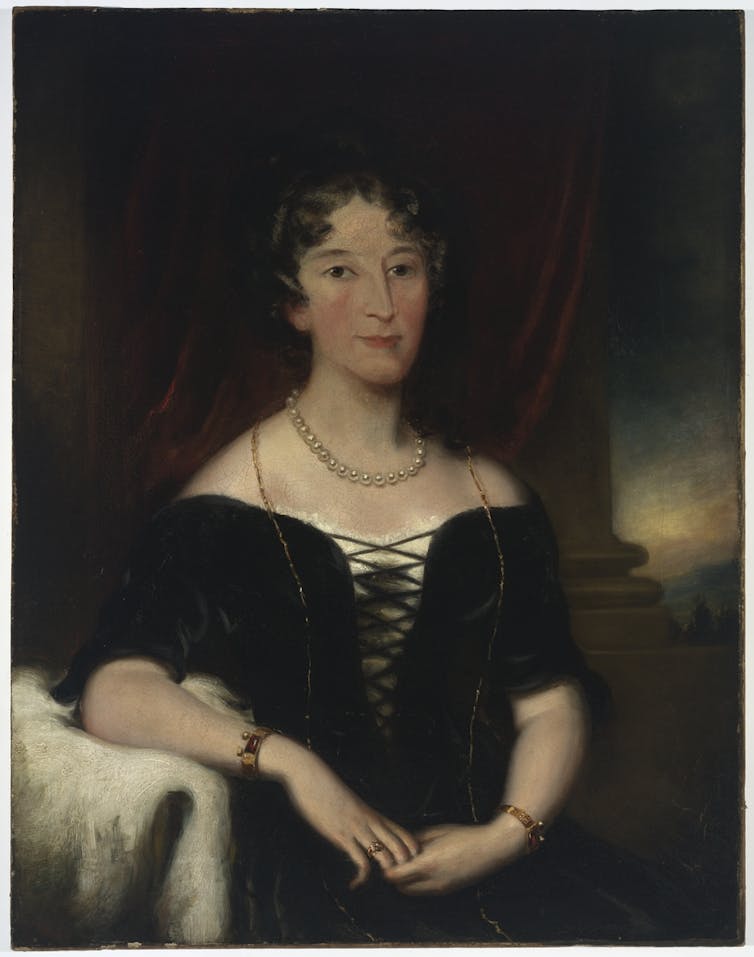
Do not believe too quickly!
This warning prologue begins Kate Grenville’s novel A Room Made of Leaves (2021), a purported long-lost secret memoir by Elizabeth Macarthur that Grenville “found” hidden in a roof cavity.
The award-winning novel reinvented Macarthur, from the dutiful colonial wife of John Macarthur to a passionate, intelligent and empathetic queen of sheep.
Review: Elizabeth Macarthur’s Letters – edited by Kate Grenville (Text Publishing)
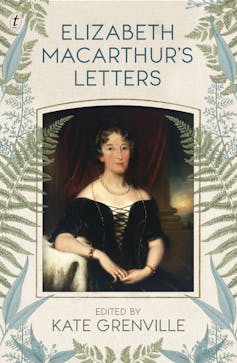
During her reign, Elizabeth Macarthur built a pastoral kingdom, while her Machiavellian husband networked, schemed, and fought court battles in England. The Macarthur name is synonymous with colonialism.
Their first enterprise, Elizabeth Farm, remains a historic house in Sydney’s Rosehill. Likewise, in the Macarthur region (named after the family) of southwest Sydney, their grand home, surrounded by grazing paddocks that once sustained over 5,000 merino sheep, still stands on Dharawal land.
The same cautionary prologue could have opened Grenville’s new companion book to A Room Made of Leaves, Elizabeth Macarthur’s Letters,, in which she once again unsettles expectations of truth, this time in non-fiction form. Grenville presents Elizabeth’s edited correspondence as a knowing fiction. Do not believe too quickly Elizabeth’s accounts of her life and feelings, despite the archival evidence of her faded brown calligraphy.
Instead, Grenville suggests we read them as doubleness and concealment. She writes:
Wondering at the disconnect between the letters and the life, I began to think that Elizabeth Macarthur’s letters could be seen as a wonderful piece of fiction, sustained over sixty years.
She pictures Macarthur
smiling to herself as she wrote sentence after sentence of this fiction, relishing the delicious ironies of saying exactly the opposite of what she really thought.
Weaponised Irony
Grenville’s theory is that Elizabeth weaponised irony to write her letters, transforming them from solemn, faithful accounts to sophisticated “embroidering”.
She highlights a letter that describes the colony’s crops as having “flourished in a way nearly incredible” – they had miserably failed. In another letter, written after Macarthur’s return from England, Elizabeth wrote, “you may imagine how great was my joy on the arrival of McArthur [sic]”.
Grenville is bolstered by the knowledge that women’s letters and diaries were largely self-censored, with omissions and careful wording. Employing irony and “embroidering” was essential, for letters were the 19th century equivalent of a Facebook post shared among family and friends.
Lyndsey Jenkins of the Women’s History Network observes that the truth of a woman’s life at this time lies in what is not said in their neat scrolls. Instead, it is found in the
torn out pages and scratched out sentences … offering hints and clues to the unspeakable and unacceptable.

As per a traditional edited book of archival material, Grenville has chronologically arranged these letters, which she “pruned pretty hard”. She explains that the pruning is to remove trivial gossip and family movements, irrelevant to the core of the letters.
She begins with a letter to Elizabeth’s mother in 1789, which Grenville quoted in A Room Made of Leaves, and ends with Elizabeth’s short letter to her son, Edward, in 1849 – the year before her death.
As Grenville acknowledges, she is not the first to publish or transcribe Elizabeth’s letters. But beyond this chronology, the introduction and notes on editing, Grenville departs from convention to deliver a difficult book to a contemporary audience.
The Problem Of The Contemporary Gaze
In commentaries that precede each letter, Grenville takes a self-searching, subjective approach that reveals the difficulty of bringing problematic historical material into the contemporary cultural gaze. Should Elizabeth be “cancelled” for her descriptions of the First Nations people whose land she and her husband enriched themselves upon? How should we interpret her careless pity for convicts who built their empire?
Author Ruby Hamad argues that white women as the “virtuous, innocent face of western civilisation”, benefited from colonialism, and enabled it.
As the face of female colonialists, should Elizabeth be exiled back to the archives? Or should her letters be published without censure to remind us of confronting truths that defy political calls to gloss the national history curriculum?

Grenville is obviously in the latter camp, and these questions are softened by the commentary’s disconcertingly breezy, Bridgerton, “Lady Whistledown-of-the-colonies” style, which is apt, given the hit series is set in the same era as Elizabeth’s time in Australia. It reveals Grenville’s contradictory feelings about Elizabeth, as much as the bigger questions around how we re-examine historical figures.
The commentary serves a double purpose as a meta-narrative on A Room Made of Leaves. It gives insight into Grenville’s writing process and narrative decisions.
It also reveals her wobbles as to whether she is right to read Elizabeth as an expert in irony, employed to conceal her dislike of her husband. Perhaps, dear reader, “Elizabeth really was happy with him, as she so strenuously asserts”.
In A Room Made of Leaves, Grenville took Elizabeth’s letters as starting inspiration. She could imagine the woman Elizabeth might have been and who Grenville wanted her to be. In doing so, she could bring Elizabeth into line with contemporary cultural values. But in the Letters, Grenville must instead rely on her own accompanying voice, which is witheringly clear:
Reading Elizabeth’s letters, there were times when I found her unattractive – so much that I abandoned the novel more than once … She could have had a more humane perspective, and I wish she had.
Kerrie Davies, Lecturer, School of the Arts & Media, UNSW Sydney
This article is republished from The Conversation under a Creative Commons license. Read the original article.
Artificial intelligence may take your job. Some lessons from my grandmother
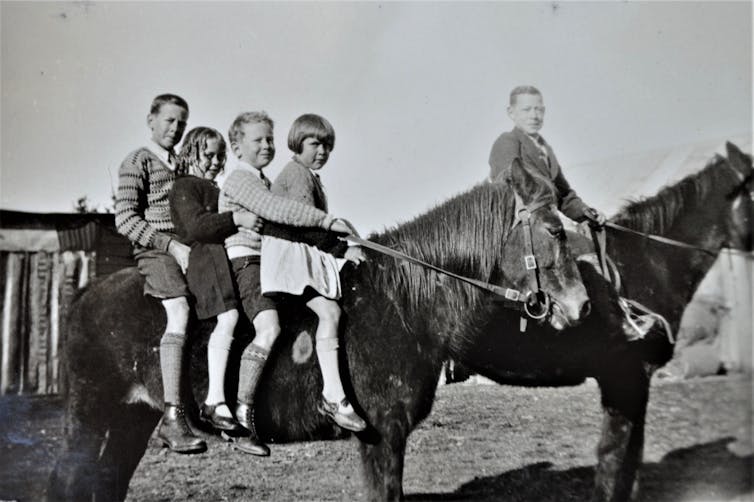
My grandmother, Claire Hastings, was born in the 1920s on a farm in Armidale, northern New South Wales. That was a relatively common thing, with just 43% of the population living in cities, compared with more than 70% now.
She lived in a small wooden hut, with a chicken coop out the front and fields out the back. When she and her siblings came home from school, they helped plough the fields with a horse-drawn plough until sundown.
Little did she know this life would soon disappear. The “second industrial revolution” (of mass production and standardisation) was creating machines to replace human and horse power. A plough pulled by a tractor could do in hours what took Grandma and her siblings a week.
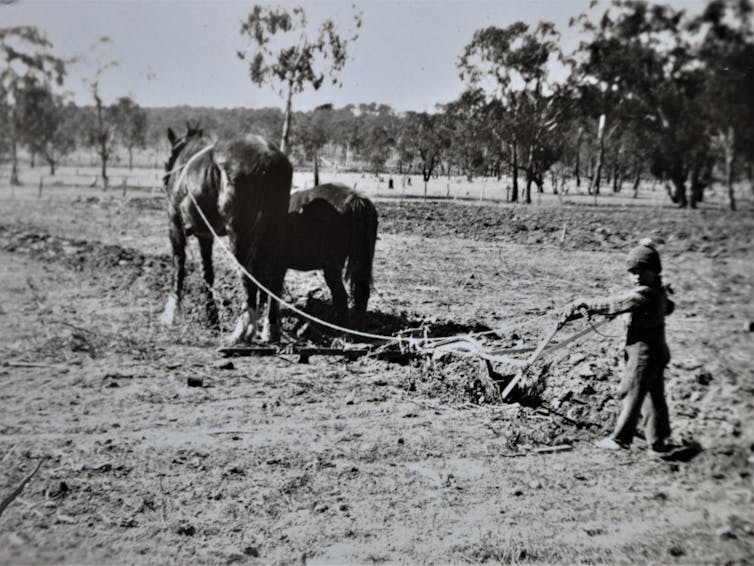
By the time she left school, age 17, she wasn’t needed on the farm. So she instead went to college, became a teacher, got married and raised a family. Now 93, she lives in a comfy suburban four-bedroom home, enjoys dining at restaurants, and loves going to the theatre and on ocean cruises.
Her story is far from unique. Around the world industrialisation has reduced farm employment enormously. In the United States, for example, 40% of the labour force worked on farms in 1920; now it is about 2%
The loss of those jobs, and their replacement, is worth remembering as we now confront the “fourth industrial revolution”, with robots and artificial intelligence tipped to take up to 40% of the jobs now done by humans within two decades.
The hit list is long, from drivers and call-centre workers to computer programmers and university lecturers like myself (we face being replaced by AI avatars, delivering animated content online).
But just as disappearing farm jobs didn’t lead to permanent mass unemployment, nor should we fear this next stage of technological development.
Improving Quality Of Life
While industrial farming was not universally embraced as progress, the huge reductions in farming labour over the 20th century were key to a better life for most people (though poverty and glaring economic inequality still exist).
To cite just one measure, when my grandmother was born the average life expectancy in Australia was 60 years. Now it’s more than 80.
The underlying forces driving such advances are twofold.
First, the mechanisation of farming made food cheaper. US data shows the price of a common basket of groceries is now about 80% cheaper than a century ago. Similar trends exist for virtually every other consumable product.
Second, spending less on food meant people could spend more on other things. New industries sprang up – automobiles, holidays, health care, finance, fitness and education and so on. Sectors virtually unknown in the 1920s now employ more than half of the population.
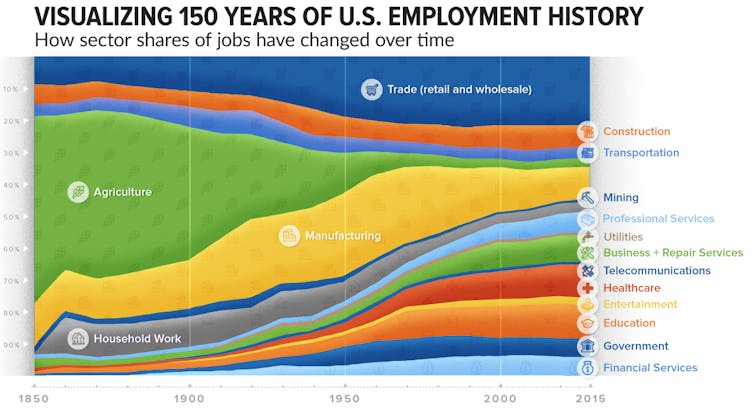
These new industries have both underpinned improvements in our quality of life and, crucially, created new jobs.
As artificial intelligence and robotics develop, services such as banking, insurance and transport will become cheaper. As a consequence, we will have more money to spend on other items – on health and fitness, travel and leisure and possibilities yet to be conceived.
Whatever these new or expanded industries are, jobs will evolve at the same time as quality of life improves for all.
Two Lessons From My Grandmother
None of this, of course, will necessarily make you feel better if you have (and love) a job under threat from automation.
Some lessons from my grandma’s life may help.
First, she didn’t take the changes personally. She understood that times were changing, and that she would have to change with them. She embraced the challenge rather than being defeated by it.

Second, she understood she had to develop new skills. At the same time as farm jobs were diminishing, she saw growing demand for more teachers, underpinned by government regulations requiring children to stay in school longer. So too today education is the key for future jobs.
None of us know what the future holds. But for our collective future to replicate the advancements my grandmother has seen over her life, it’s inevitable that artificial intelligence and robots will take over jobs.
I asked grandma if we should be worried. “Life moves on,” she told me.
And so must we.![]()
Bradley Hastings, Research Fellow, UNSW Sydney
This article is republished from The Conversation under a Creative Commons license. Read the original article.
Time might not exist, according to physicists and philosophers – but that’s okay

Does time exist? The answer to this question may seem obvious: of course it does! Just look at a calendar or a clock.
But developments in physics suggest the non-existence of time is an open possibility, and one that we should take seriously.
How can that be, and what would it mean? It’ll take a little while to explain, but don’t worry: even if time doesn’t exist, our lives will go on as usual.
A Crisis In Physics
Physics is in crisis. For the past century or so, we have explained the universe with two wildly successful physical theories: general relativity and quantum mechanics.
Quantum mechanics describes how things work in the incredibly tiny world of particles and particle interactions. General relativity describes the big picture of gravity and how objects move.
Both theories work extremely well in their own right, but the two are thought to conflict with one another. Though the exact nature of the conflict is controversial, scientists generally agree both theories need to be replaced with a new, more general theory.
Physicists want to produce a theory of “quantum gravity” that replaces general relativity and quantum mechanics, while capturing the extraordinary success of both. Such a theory would explain how gravity’s big picture works at the miniature scale of particles.
Time In Quantum Gravity
It turns out that producing a theory of quantum gravity is extraordinarily difficult.
One attempt to overcome the conflict between the two theories is string theory. String theory replaces particles with strings vibrating in as many as 11 dimensions.
However, string theory faces a further difficulty. String theories provide a range of models that describe a universe broadly like our own, and they don’t really make any clear predictions that can be tested by experiments to figure out which model is the right one.
In the 1980s and 1990s, many physicists became dissatisfied with string theory and came up with a range of new mathematical approaches to quantum gravity.
One of the most prominent of these is loop quantum gravity, which proposes that the fabric of space and time is made of a network of extremely small discrete chunks, or “loops”.
One of the remarkable aspects of loop quantum gravity is that it appears to eliminate time entirely.
Loop quantum gravity is not alone in abolishing time: a number of other approaches also seem to remove time as a fundamental aspect of reality.
Emergent Time
So we know we need a new physical theory to explain the universe, and that this theory might not feature time.
Suppose such a theory turns out to be correct. Would it follow that time does not exist?
It’s complicated, and it depends what we mean by exist.
Theories of physics don’t include any tables, chairs, or people, and yet we still accept that tables, chairs and people exist.

Why? Because we assume that such things exist at a higher level than the level described by physics.
We say that tables, for example, “emerge” from an underlying physics of particles whizzing around the universe.
But while we have a pretty good sense of how a table might be made out of fundamental particles, we have no idea how time might be “made out of” something more fundamental.
So unless we can come up with a good account of how time emerges, it is not clear we can simply assume time exists.
Time might not exist at any level.
Time And Agency
Saying that time does not exist at any level is like saying that there are no tables at all.
Trying to get by in a world without tables might be tough, but managing in a world without time seems positively disastrous.
Our entire lives are built around time. We plan for the future, in light of what we know about the past. We hold people morally accountable for their past actions, with an eye to reprimanding them later on.
We believe ourselves to be agents (entities that can do things) in part because we can plan to act in a way that will bring about changes in the future.
But what’s the point of acting to bring about a change in the future when, in a very real sense, there is no future to act for?
What’s the point of punishing someone for a past action, when there is no past and so, apparently, no such action?
The discovery that time does not exist would seem to bring the entire world to a grinding halt. We would have no reason to get out of bed.
Business As Usual
There is a way out of the mess.
While physics might eliminate time, it seems to leave causation intact: the sense in which one thing can bring about another.
Perhaps what physics is telling us, then, is that causation and not time is the basic feature of our universe.
If that’s right, then agency can still survive. For it is possible to reconstruct a sense of agency entirely in causal terms.
At least, that’s what Kristie Miller, Jonathan Tallant and I argue in our new book.
We suggest the discovery that time does not exist may have no direct impact on our lives, even while it propels physics into a new era.![]()
Sam Baron, Associate professor, Australian Catholic University
This article is republished from The Conversation under a Creative Commons license. Read the original article.
Thousands of satellites are polluting Australian skies, and threatening ancient Indigenous astronomy practices
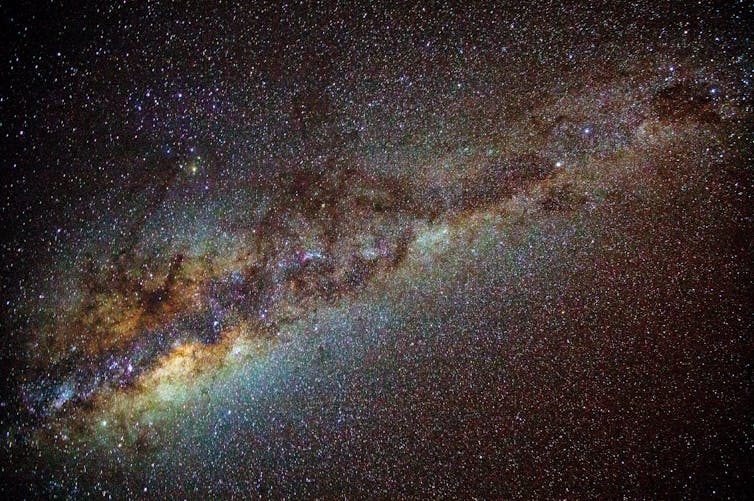
Since time immemorial, Indigenous peoples worldwide have observed, tracked and memorised all the visible objects in the night sky.
This ancient star knowledge was meticulously ingrained with practical knowledge of the land, sky, waters, community and the Dreaming — and passed down through generations.
One of the most well-known and celebrated Aboriginal constellations is the Emu in the Sky, which appears in the southern sky early in the year. It is an example of a dark constellation, which means it’s characterised by particularly dark patches in the sky, rather than stars.
Conversely, space technology companies such as Starlink are increasingly competing to dominate the skies, and potentially change them forever.
The modern-day space race has led to thousands of satellites being scattered through Earth’s outer orbits. If left unchallenged, these companies risk overpopulating an already crowded space environment – potentially pushing dark skies to extinction.
Mega-Constellations
Mega-constellations are groupings of satellites that communicate and work together as they orbit Earth.
Since 2018, the Starlink project, run by Elon Musk’s SpaceX, has launched about 1,700 satellites into low Earth orbit. The company plans to launch another 30,000 over the next decade.
British company OneWeb has launched nearly 150 satellites, with plans for another 6,000. And Amazon intends to launch an additional 3,000 satellites into multiple orbits.

Each of these companies is taking to the skies to increase internet access across the globe. But even if they deliver on this, sky gazers — and especially Indigenous peoples — are left to wonder: at what cost?
Streaks In The Night
People across the globe began noticing streaks across our skies not long after the first Starlink launch in May 2019. They were unlike anything anyone had seen before.
Astronomers are very used to viewing the sky and dealing with interference, often originating from aircraft or the occasional satellite. However, the goal of mega-constellations is to engulf the entire planet, leaving no place untouched. Mega-constellations alter our collective view of the stars. And there is currently no known way to remove them.
One mega-constellation has been observed to produce up to 19 parallel streaks across the sky. These streaks disturb astronomical observations, and a significant amount of scientific data can be lost as a result.

As they travel across the entire sky, scattering the Sun’s light, dark constellations become even fainter — further desecrating Indigenous knowledge and kinship with the environment.
Further research on the impacts of mega-constellations have found that as they orbit Earth, the Sun’s rays are reflected off them and scattered into the atmosphere.
The authors of that study conclude we are collectively experiencing a new type of “skyglow” as a result: a phenomenon in which the brightness of the sky increases due to human-made light pollution.
Initial calculations indicate this new source of light pollution has increased the brightness of night skies globally by about 10%, compared with the natural skyglow measured in the 1960s.
Currently, the upper limit of light pollution tolerable at observatories is 10% above the natural skyglow, which suggests we have already reached the limit.
In other words, scientific observations of the sky are already at risk of being rendered redundant. If this excess skyglow increases even more, observatories are at serious risk.
Indigenous Sky Sovereignty
Indigenous knowledge systems and oral traditions teach us about the intricate and complex relationships Indigenous peoples have with the environment, including the sky.
For example, many Aboriginal and Torres Strait Islander cultures have no concept of “outer space”. They only have a continuous and connected reality where coexistence with all things is paramount.
As captured by the Bawaka Country group, based in northeast Arnhem Land:
…to hurt Sky Country, to try and possess it, is an ongoing colonisation of the plural lifeworlds of all those who have ongoing connections with and beyond the sky.
Desecrating the sky impacts Indigenous sovereignty as it limits access to their knowledge system, in the same ways desecrating the land has removed First Peoples from their countries, cultures and ways of life.
For example, the Gamilaraay and Wiradjuri peoples of New South Wales observe the Emu in the Sky to gauge when it is time to hunt for emu eggs — and most importantly, when it is time to stop. How would the Gamilaraay know when to stop collecting eggs, or when to conduct annual ceremonies signalled by the Celestial Emu, if it was no longer visible?
Similarly, important parts of the Jukurrpa, or Dreaming of the Martu people of Western Australia is embedded in the Seven Sisters constellation. How would they keep this knowledge safe if they can’t locate any of the Sisters?
Indigenous histories teach us about the devastating consequences of colonialism, and how the impacts of the colonial agenda can be mitigated through prioritising the health of country and community.
In the words of astronomer Aparna Venkatesan and colleagues:
…the manner and pace of ‘occupying’ near-Earth space raise the risk of repeating the mistakes of colonisation on a cosmic scale.
Active Indigenous sky sovereignty acknowledges the interconnected nature between land and sky, and that caring for country includes sky country. By doing so, it challenges the otherwise unimpeded authority of technology corporations.
Harming Fauna, Harming Ourselves
By understanding that the world (and indeed the Universe) is interconnected, we see that no living creature is immune to the consequences of polluting the skies.
Currently, native fauna such as the tammar wallaby, magpie, bogong moth and marine turtles are experiencing a reduction in populations and quality of life due to the impacts of light-pollution.
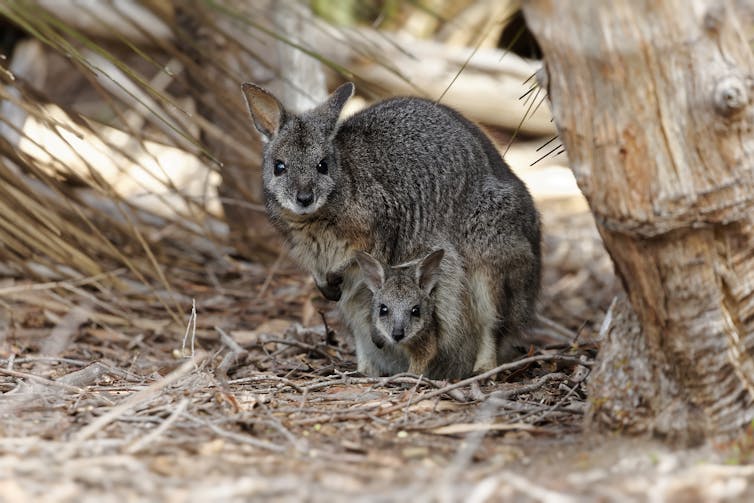
Migratory species are particularly affected by light pollution, which can result in them losing access to their migratory route. This is a crisis Australia’s fauna has faced since before the introduction of mega-constellations.
With more skyglow and light pollution, positive outcomes for native fauna and migratory species diminish.
Going Forward
Several companies have made attempts to reduce the impact of mega-constellations on skyglow.
For example, OneWeb has opted to rollout fewer satellites than initially proposed, and has designed them to be positioned at a higher altitude. This means they will produce less skyglow, while also covering a larger area.
Starlink, on the other hand, has not shown any public interest in operating at higher and less impactful altitudes, for fears it will impact the Starlink network’s speed and latency.
That said, they have attempted to reduce their satellites’ luminosity by painting them with a novel anti-reflective coating. Coating techniques have demonstrated a reduction in reflected sunlight by up to 50%. Unfortunately, not all wavelengths of light being scattered are reduced using this method. So multi-wave astronomy, and different species of animals, are still at risk.
We’ll need more solutions to navigate our increasingly polluted atmosphere, particularly if communication monopolies continue to rein over near-Earth space.
Just as some companies have started considering tactics to avoid increasing skyglow, all space tech companies must be held responsible for adding to an already polluted space.
Guidelines such as those set by the Inter-Agency Space Debris Coordination Committee offer solutions to this problem. They suggest lowering the height of a satellite’s orbit when it’s no longer needed, allowing it to disintegrate as it falls down to Earth.
However, these are international guidelines, so there’s no legal framework to enforce such practices.
And given that near-miss collisions have already taken place between some mega-constellations, and an estimated 20,000 pieces of space debris already floating above, reducing orbital pollution must also now be a priority.
Reducing air pollutants has also been shown to drastically decrease natural sky brightness, offering a potential solution for improving night sky visibility — not to mention cleaner breathing air for all.
In valuing Indigenous knowledge systems, that value must be extended to the natural environment in which that knowledge is embedded and founded upon. In Australia, preserving dark skies is not just vital for the continuation of Indigenous knowledge and astronomers — it benefits us all.
A major tenet of life for Indigenous peoples is valuing the sustainability of one’s actions. By adopting this at a larger scale, we could create a reality in which we’re not a threat to our own survival.![]()
Karlie Noon, Astronomer, Australian National University
This article is republished from The Conversation under a Creative Commons license. Read the original article.
Junior Lifesaver Of The Year 2022
Published April 21, 2022 by Surf Life Saving NSW
Our 2022 Junior Lifesaver of the Year participants loved their week long camp learning and developing new skills to take back to their clubs and teach up and coming lifesavers.
Curious Kids: how is fabric made?
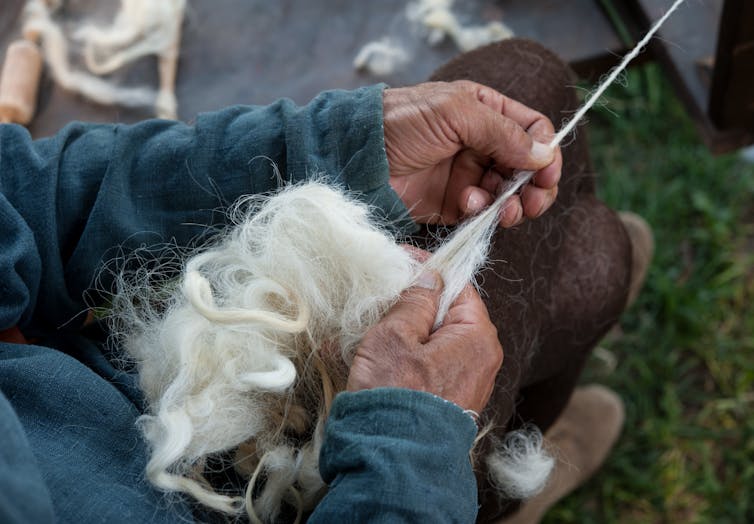
How is fabric made? – Saskia, age 5, Sydney
Hi Saskia, that’s a great question!
From clothes to curtains, towels and sheets, fabrics are everywhere in our daily lives. You might also hear people call them “textiles”.
People have been making fabric, or textiles, for a very long time. In fact, they’ve been doing it for almost 35,000 years!
Let’s first think about what a fabric is. The dictionary says fabric is a cloth made by knitting or weaving together fibres.
What Is A Fibre?
A fibre is like a strand of hair. It’s very long and thin.
Fibres can come from nature. Some common natural fibres are cotton, silk and wool.

Humans have also found ways to make fibres ourselves in the past 150 years. We can use technology to turn oil into fibres. We can even make special fibres to make your raincoat waterproof, or make a soldier’s vest bullet-proof.
But how can these thin, hair-like fibres be made into something we can wear?
From Fibre To Yarn
First, we need to put the fibres together to make long strings of yarn. This can be tricky because many fibres are quite short, especially natural ones.
A cotton fibre is usually only around 3cm long. That’s shorter than a paper clip. Wool is usually cut from a sheep when it is 7.5cm long – about the length of a crayon.
We twist these shorter fibres together to make a longer yarn. The twisting makes the fibres rub together and grip to each other. This is called yarn spinning.
Yarn Spinning
The first step of yarn spinning involves taking bundle of fibres, lining them up, them combing them like you comb your hair … or how you might comb a long beard! In fact, when we’ve combed them into a sheet, we call it a “beard”.

Next, the sheet is stretched into a long tube. As it stretches, it becomes thinner and thinner. Then we twist it to form a yarn. This delicate sheet of fibres may have been metres wide to begin with, but we twist it into a thin thread.
There are all types of yarn threads. They can be thin, thick, hard, soft, stretchy, or even ones you can’t cut! It all depends on the starting fibre and the machine settings.
Turning Yarn Into Fabric
Once we have our yarn, we’re ready to make fabric. There are many ways do this, such as weaving, knitting or felting.
Weaving crosses the yarns over and under in a chessboard pattern. Knitting makes loops that pass through each other.

Felting is when we get wool fibres wet and soapy. We rub the fibres together until they are all tangled up. Then we press the fibres into a flat sheet called felt.
Weaving, knitting and felting can be very slow if you do them by hand! These days we often use machines to speed things up.
How Fabric Is Made
So we start with the fibre. Then we spin it into long strings of yarn. Next we weave, knit or felt the yarn into fabric. And that, Saskia, is how we make fabric.
Hello, curious kids! Have you got a question you’d like an expert to answer? Ask an adult to send your question to curiouskids@theconversation.edu.au![]()
Ken Aldren S. Usman, PhD Candidate, Deakin University and Dylan Hegh, Manager - Circular Economy Initatives and ANFF-Deakin Hub, Deakin University
This article is republished from The Conversation under a Creative Commons license. Read the original article.
Why do cats’ eyes glow in the dark?
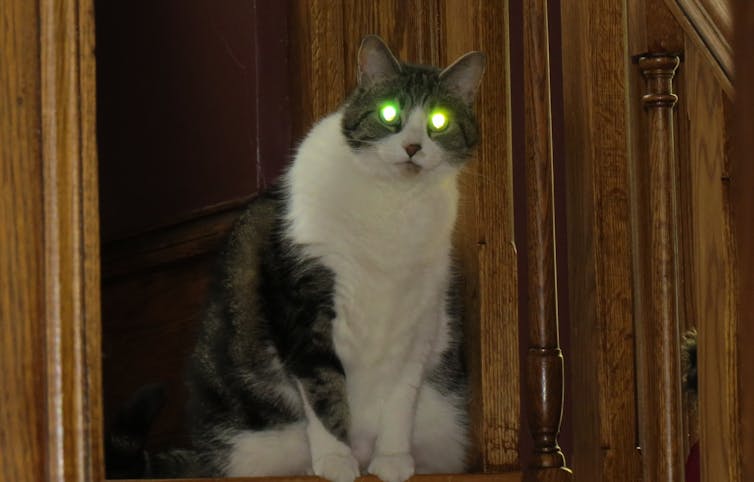

Curious Kids is a series for children of all ages. If you have a question you’d like an expert to answer, send it to curiouskidsus@theconversation.com.
Why do cats’ eyes glow in the dark? Chloe, age 10, Barkhamsted, Connecticut
Cats and many other animals, including most dogs, can reflect light from their eyes. That’s why cats’ eyes will usually shine brightly in photos taken in a dimly lit room or glow when illuminated in the dark by a flashlight or a car’s headlights.
Species whose eyes glow have evolved to see better in low light because they either forage or need to look out for predators throughout the night, or they do most of their hunting at dawn and dusk. In fact, domesticated cats can see in conditions that are only 16% as bright as what people require.
Cats accomplish this because their pupils – the openings that appear black in the middle of their eyes that widen and narrow in response to light conditions – are special. Pupils operate like windows, with bigger ones letting more light into the eye. And a cat’s pupils can become up to 50% larger than human pupils in dim light. They also have a higher number of a specific type of light-sensing cell in the back of their eyes than we do. These cells, called rods, catch low-level light.

The Tapetum Lucidum
In addition to having large pupils and lots of rods, cats have something people don’t: a tapetum lucidum, a Latin medical term that translates to “bright or shining tapestry.” The tapetum lucidum is also known as “eyeshine.”
It’s located in the back of the eye behind the retina – a thin layer of tissue that receives light, converts the light to an electrical signal and sends this signal to the brain to interpret the image.
A cat’s tapetum lucidum is made up of cells with crystals that, like a mirror, reflect light back to the retina. This gives the retina a second chance to absorb more light.
The feline tapetum lucidum is special because its reflective compound is riboflavin, a type of vitamin B. Riboflavin has unique properties that amplify light to a specific wavelength that cats can see well, which greatly increases the sensitivity of the retina to low light.
In cats, the tapetum most often glows yellow-green or yellow-orange, but the color varies, just like their irises – the colorful part of their eye, which can be green, yellow, blue or golden. Variation in tapetum color is not unique to cats and can be found in lots of species.

Other Animals’ Eyes Glow Too
Many other animals that need to see at night have a tapetum lucidum. That includes predators and prey alike, everything from wild foxes to farmed sheep and goats.
The tapetum lucidum is also useful to fish, dolphins and other aquatic animals, because it helps them see better in murky, dark water.
In land animals, the tapetum is found in the top half of the eye behind the retina, because they need to see what is on the ground best. But in aquatic animals the tapetum takes up most of the eye, because they need to see all around them in the dark.
Like cats, the lemur, a small primate, and its close relative, the bush baby – also known as a “night monkey” – also have a superreflective tapetum made with riboflavin.
Even though a lot of animals have eyeshine, some small domesticated dogs lack this trait. Most animals with blue eyes and white or light-colored coats have also lost this trait.
So don’t be alarmed if your dog’s or cat’s eyes don’t glow. The list of other species without a tapetum lucidum includes pigs, birds, reptiles and most rodents and primates – including humans.
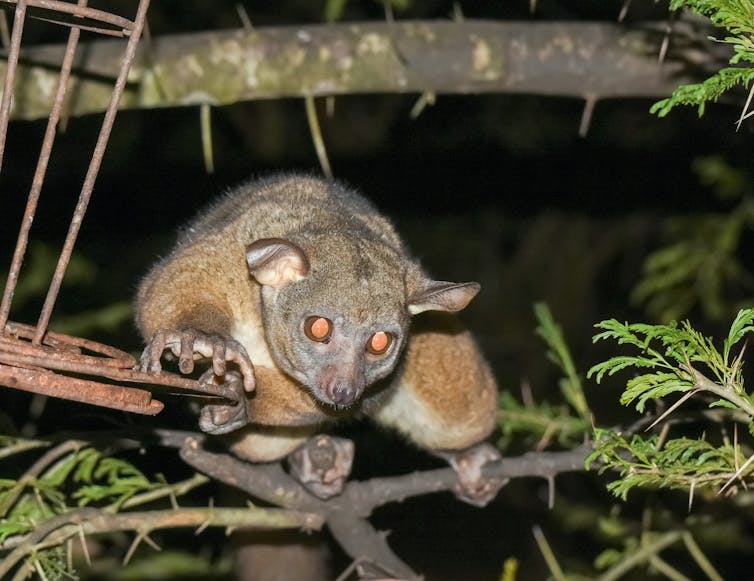
Is There A Downside?
Unfortunately, animals with a tapetum lucidum sacrifice some visual acuity for their ability to see in dim light.
That’s because all that light bouncing around as it reflects off the tapetum can make what they see a little fuzzier. So, a cat needs to be seven times closer to an object to see it as sharply as a person would in a brightly lit place.
But don’t worry, I’m sure your cat would rather see clearly at night than read a book.
Hello, curious kids! Do you have a question you’d like an expert to answer? Ask an adult to send your question to CuriousKidsUS@theconversation.com. Please tell us your name, age and the city where you live.
And since curiosity has no age limit – adults, let us know what you’re wondering, too. We won’t be able to answer every question, but we will do our best.![]()
Braidee Foote, Clinical Assistant Professor of Veterinary Ophthalmology, University of Tennessee
This article is republished from The Conversation under a Creative Commons license. Read the original article.
Turimetta Beach
photo taken Thursday April 21st, 2022 by Joe Mills
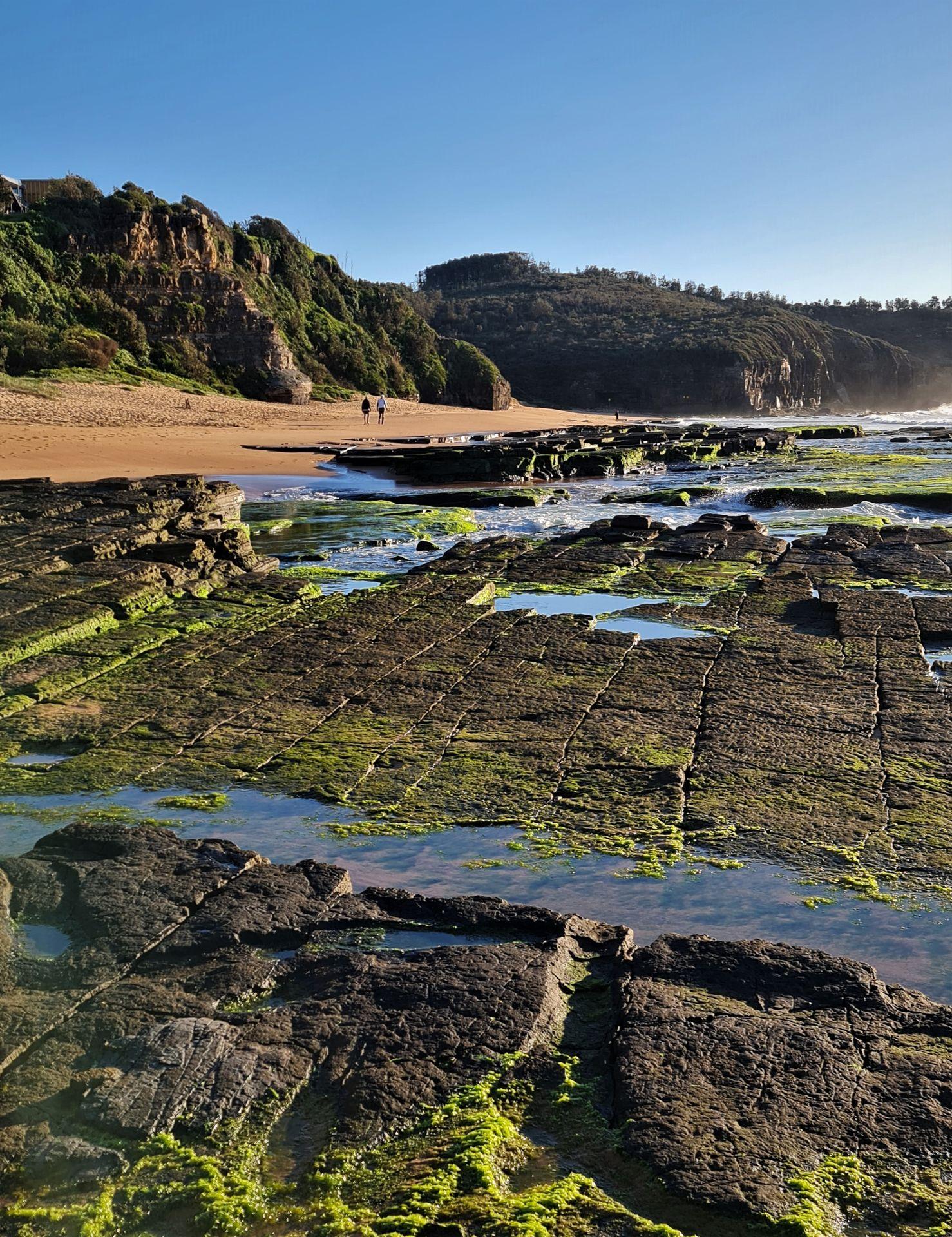
Banana Songs
This week we've been remembering banana songs or songs about bananas from our childhood while eating bananas - which are pretty good at the moment. In fact, today, I'm going to make a banana and date cake the whole family loves while the oven is on cooking dinner. I put lots of bananas, yoghurt and honey in this cake I make so that even though everyone thinks 'I'm eating cake' they're also eating something which is filled with things that are good for them. The leftover cake will be put into lunchboxes this coming week as everyone heads back to work and school.
Bananas are a great fruit and are a healthy source of fibre, potassium, vitamin B6, vitamin C, and various antioxidants and phytonutrients. We LOVE them.
Anyway; here's a few banana songs, commencing with one from a show I used to watch when I was your age and including one I thought was about bananas, but may not have been about bananas at all - I still sing it anyway. We hope you enjoy them and have a bit of a dance around.
Have a great week back at school!
Al; the Editor.
The Banana Splits Opening and Closing Theme 1968 - 1970: The Banana Splits are four funny animal characters who featured in a late 1960s children's variety show made for television. The costumed hosts of the show were Fleegle (guitar, vocals), Bingo (drums, vocals), Drooper (bass, vocals) and Snorky (keyboards, effects). The Banana Splits Adventure Hour was an hour-long, packaged television program that featured both live action and animated segments.
Each show represented a meeting of the "Banana Splits Club", and the wraparounds featured the adventures of the club members, who doubled as a musical quartet, meant to be reminiscent of The Beatles and (especially) their NBC counterpart, The Monkees. The main characters were Fleegle, a beagle; Bingo, a gorilla; Drooper, a lion, and Snorky (called "Snork" in the theme song lyrics), an elephant. Fleegle would assume the role as leader of the Banana Splits and preside at club meetings.
Harry Belafonte (born Harold George Bellanfanti Jr.; March 1, 1927) is an American singer, songwriter, activist, and actor. One of the most successful Jamaican-American pop stars, as he popularised the Trinbagonian Caribbean musical style with an international audience in the 1950s. His breakthrough album Calypso (1956) was the first million-selling LP by a single artist. Mr. Belafonte is known for his recording of "The Banana Boat Song", with its signature lyric "Day-O". He has recorded and performed in many genres, including blues, folk, gospel, show tunes, and American standards. He has also starred in several films, including Carmen Jones (1954), Island in the Sun (1957), and Odds Against Tomorrow (1959).
Belafonte considered the actor, singer and activist Paul Robeson a mentor and was a close confidant of Martin Luther King Jr. in the Civil Rights Movement in the 1950s and 1960s. As he later recalled, "Paul Robeson had been my first great formative influence; you might say he gave me my backbone. Martin King was the second; he nourished my soul."
Throughout his career, Belafonte has been an advocate for political and humanitarian causes, such as the Anti-Apartheid Movement and USA for Africa. Since 1987, he has been a UNICEF Goodwill Ambassador. Mr. Belafonte acts as the American Civil Liberties Union celebrity ambassador for juvenile justice issues.
He has won three Grammy Awards (including a Grammy Lifetime Achievement Award), an Emmy Award, and a Tony Award. In 1989, he received the Kennedy Center Honors. He was awarded the National Medal of Arts in 1994. In 2014, he received the Jean Hersholt Humanitarian Award at the Academy's 6th Annual Governors Awards.
Mr. Belafonte was born Harold George Bellanfanti Jr. at Lying-in Hospital on March 1, 1927, in Harlem, New York, the son of Jamaican-born parents Melvine (née Love), a housekeeper, and Harold George Bellanfanti Sr., who worked as a chef. His mother was the child of a Scottish Jamaican mother and an Afro-Jamaican father, and his father was the child of a black mother and a Dutch-Jewish father of Sephardic Jewish descent. Harry, Jr. was raised Catholic.
From 1932 to 1940, he lived with one of his grandmothers in her native country of Jamaica, where he attended Wolmer's Schools. Upon returning to New York City, he attended George Washington High School after which he joined the United States Navy and served during World War II.
Young Writers’ Competition 2022
Young people across the Northern Beaches are encouraged to enter this year’s Young Writers’ Competition for their chance to be published.
Now in its 13th year, the annual competition is open to students from kindergarten to grade 12 who live or go to school on the Northern Beaches. The theme of this year’s competition is ‘rise’.
“The Northern Beaches is home to some very talented young writers, and I continue to be blown away by the creativity and skill of entrants in our annual Young Writers’ Competition,” Mayor Michael Regan said.
“It’s time for young writers to once again rise and shine and show us what they’ve got. More than 500 stories were submitted in last year’s competition, and we suspect this year will be just as competitive.”
Entrants can write on any topic or theme but must include a derivation of the word ‘rise’. Entries will be grouped by age and judged according to characterisation, originality, plot, and language.
Four finalists will be chosen in each age category and invited to a presentation night on Wednesday 10 August, where a winner, runner-up, and two highly commended prizes are awarded.
Finalists from each category will have their stories published in an eBook which is added to the Northern Beaches Council Library collection.
Entries close Tuesday 31 May 2022. Entrants must be members of the Northern Beaches Council Library Service.
Complete the online entry form and attach your story as a Word document. If your story is hand-written, then a clear, readable photo or scanned PDF can be submitted.
Not a member of the library? Don't worry, Council will use this form to create a membership for you. Just mark 'no' under the library member field in the online form. If you are a member and unsure of your library card number, just mark 'yes' in the library member field in the online form and Council will find your library membership number.
Entries are judged according to characterisation, originality, plot and use of language and arranged into six different age group categories.
Four finalists are chosen in each age category and invited to a presentation night where a winner, runner-up and two highly commended prizes are awarded. Finalists from each category will have their stories published in an eBook that will be added to Council's collection.
For more information visit Council's library.
Crucial Link Found Between Arthritis, Liver Disease And A Common Genetic Condition
Anglo-Saxon Kings Were Mostly Veggie But Peasants Treated Them To Huge Barbecues
- 'You are what you eat' isotopic analysis of over 2,000 skeletons by far the largest of its kind.
- Early medieval diets were far more similar across social groups than previously thought.
- Peasants didn't give kings food as exploitative tax, they hosted feasts suggesting they were granted more respect than previously assumed.
- Surviving food lists are supplies for special feasts not blueprints for everyday elite diets.
- Some feasts served up an estimated 1kg of meat and 4,000 Calories in total, per person.
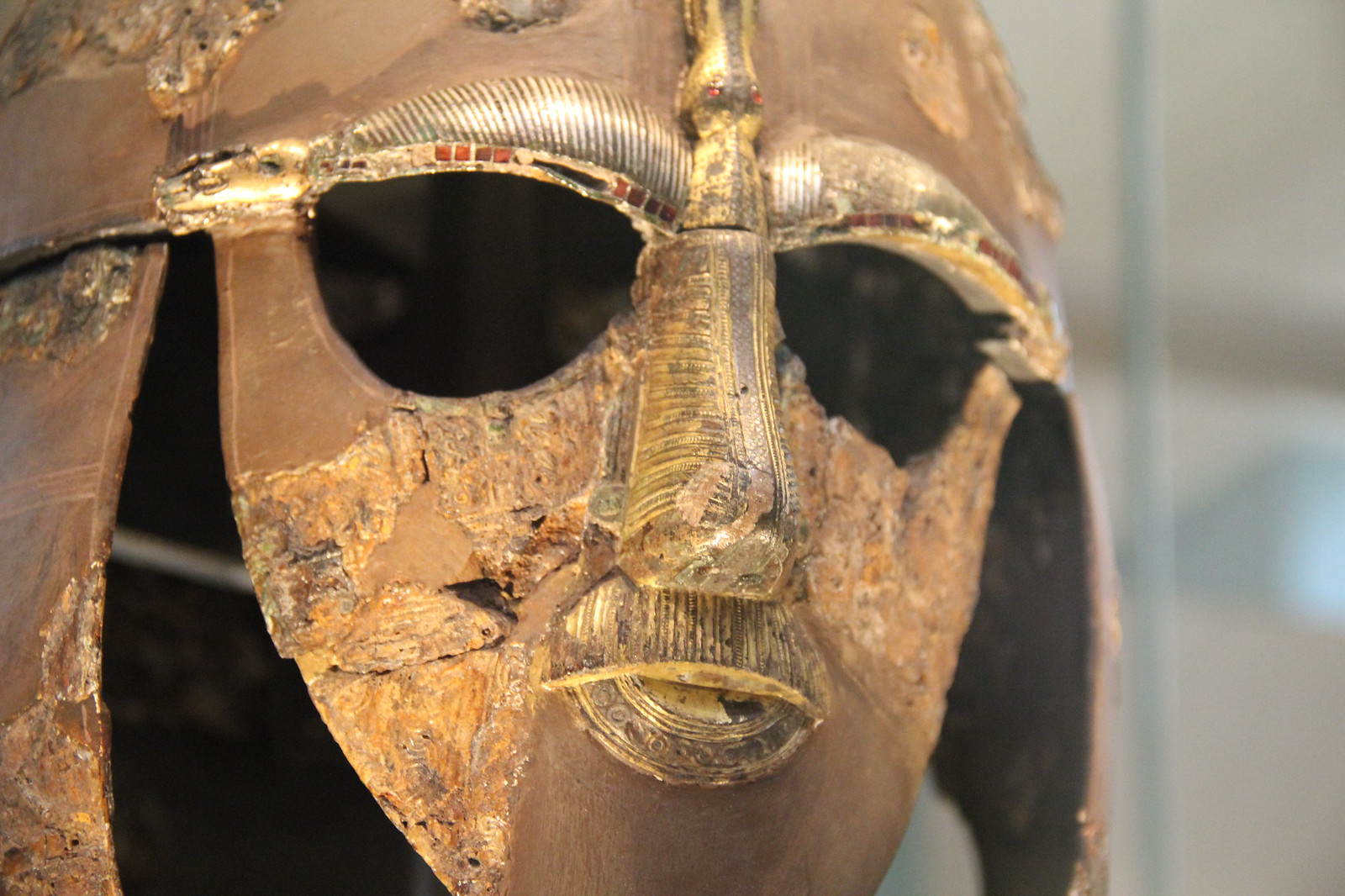
- Sam Leggett, Tom Lambert. Food and Power in Early Medieval England: a lack of (isotopic) enrichment. Anglo-Saxon England, 2022; 1 DOI: 10.1017/S0263675122000072
- Tom Lambert, Sam Leggett. Food and Power in Early Medieval England: Rethinking Feorm. Anglo-Saxon England, 2022; 1 DOI: 10.1017/S0263675122000084
Microplastics In The Food Chain: Blue Mussels Absorb Pollution In Southern Australia
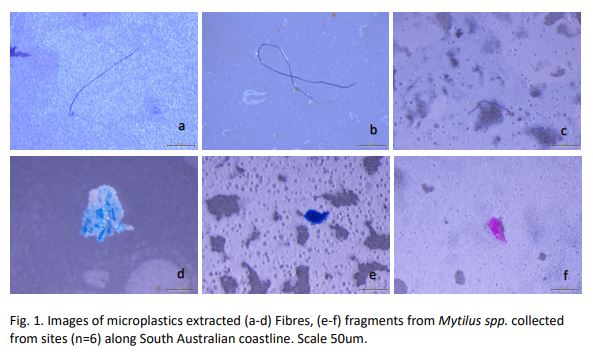
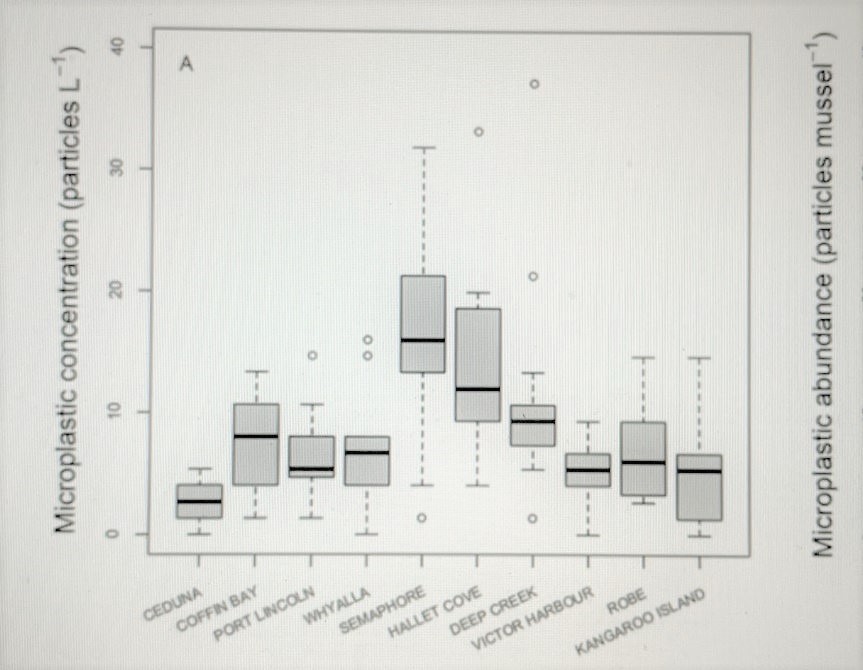
Nylon Cooking Bags, Plastic-Lined Cups Can Release Nanoparticles Into Liquids
Cortisol In Shelter Dog Hair Shows Signs Of Stress

Indiana Jones Was Right All Along: Research Shows The Smaller The Scorpion The Deadlier
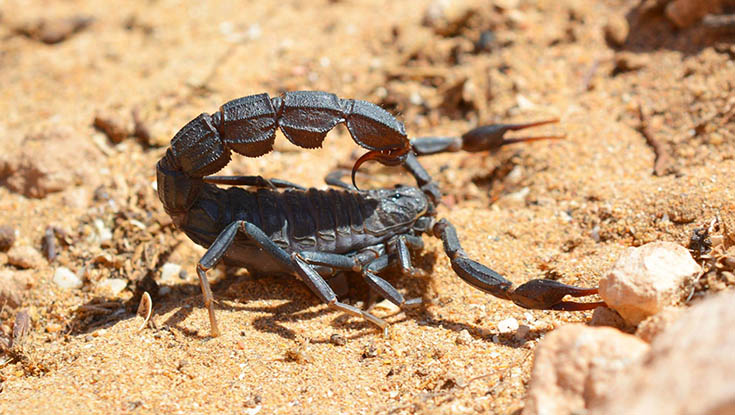
Fewer Smartphones = More Well-Being
Spatial Maps Of Melanoma

Designing The Perfect Piece Of Chocolate
Australian Orthopaedic Surgeons Not Complying With Advertising Guidelines
Windows To The Soul: Pupils Reveal 'Aphantasia' - The Absence Of Visual Imagination

Extracellular Vesicles Offer New Insights Into Treating Endocrine Disorders
Disclaimer: These articles are not intended to provide medical advice, diagnosis or treatment. Views expressed here do not necessarily reflect those of Pittwater Online News or its staff.
